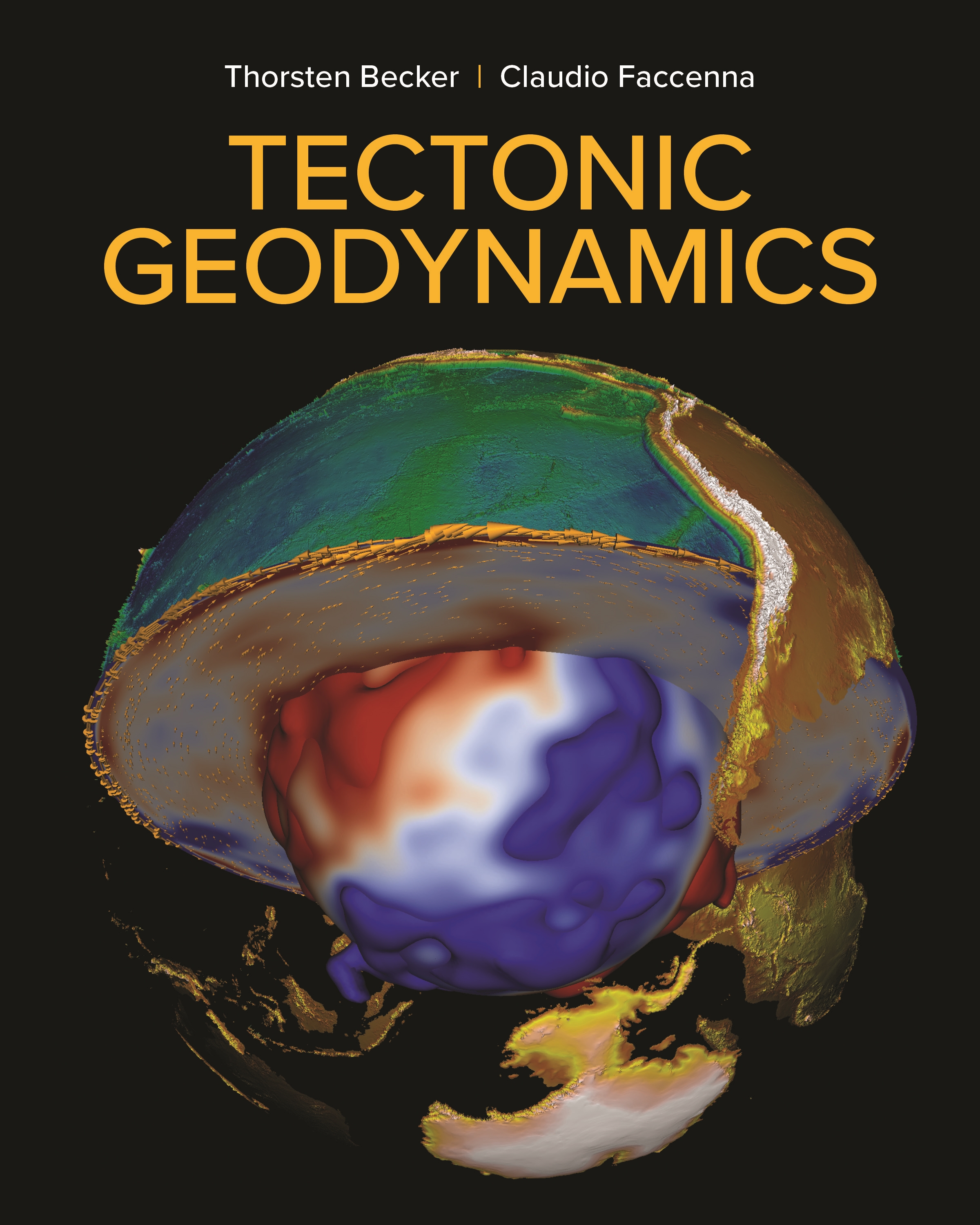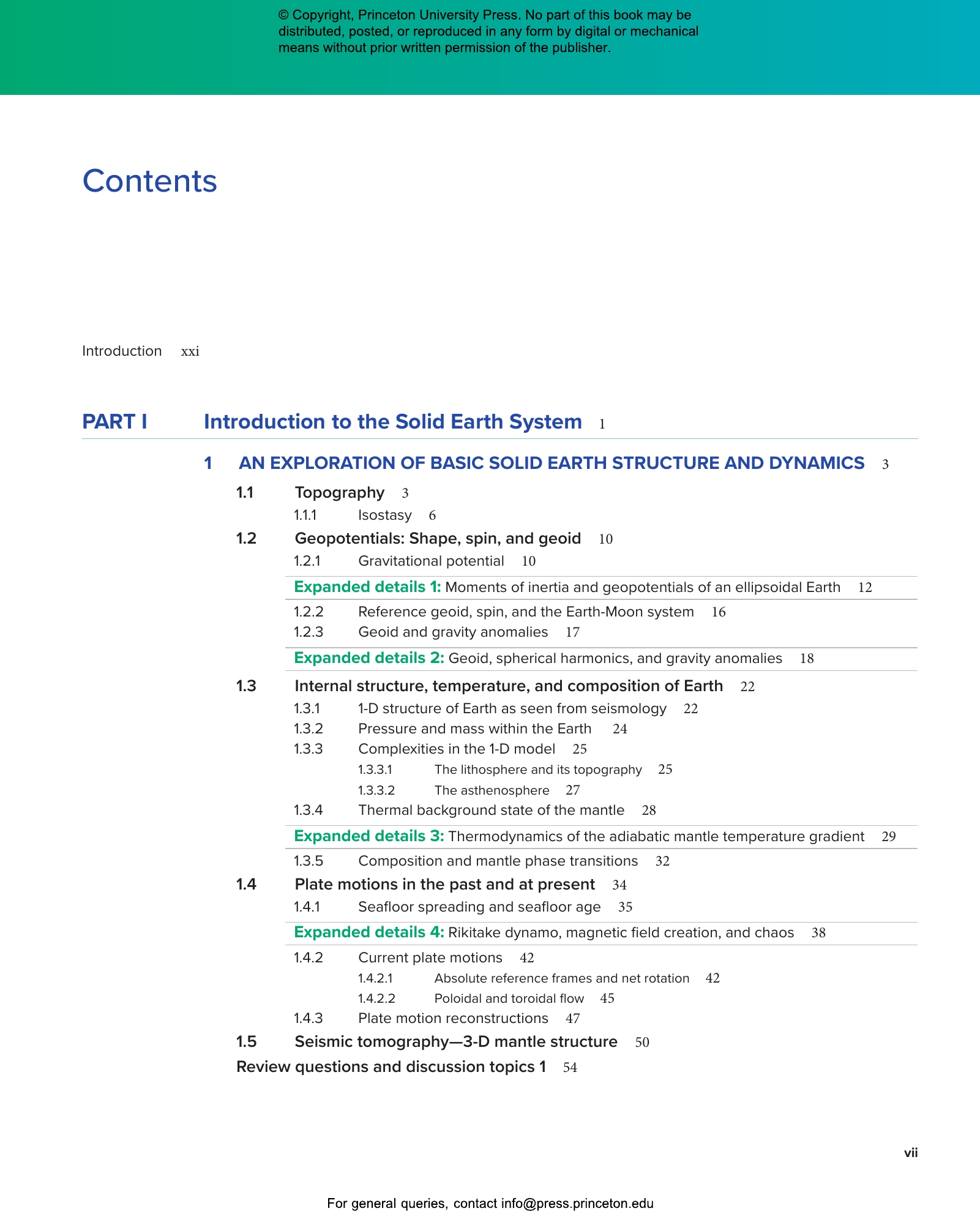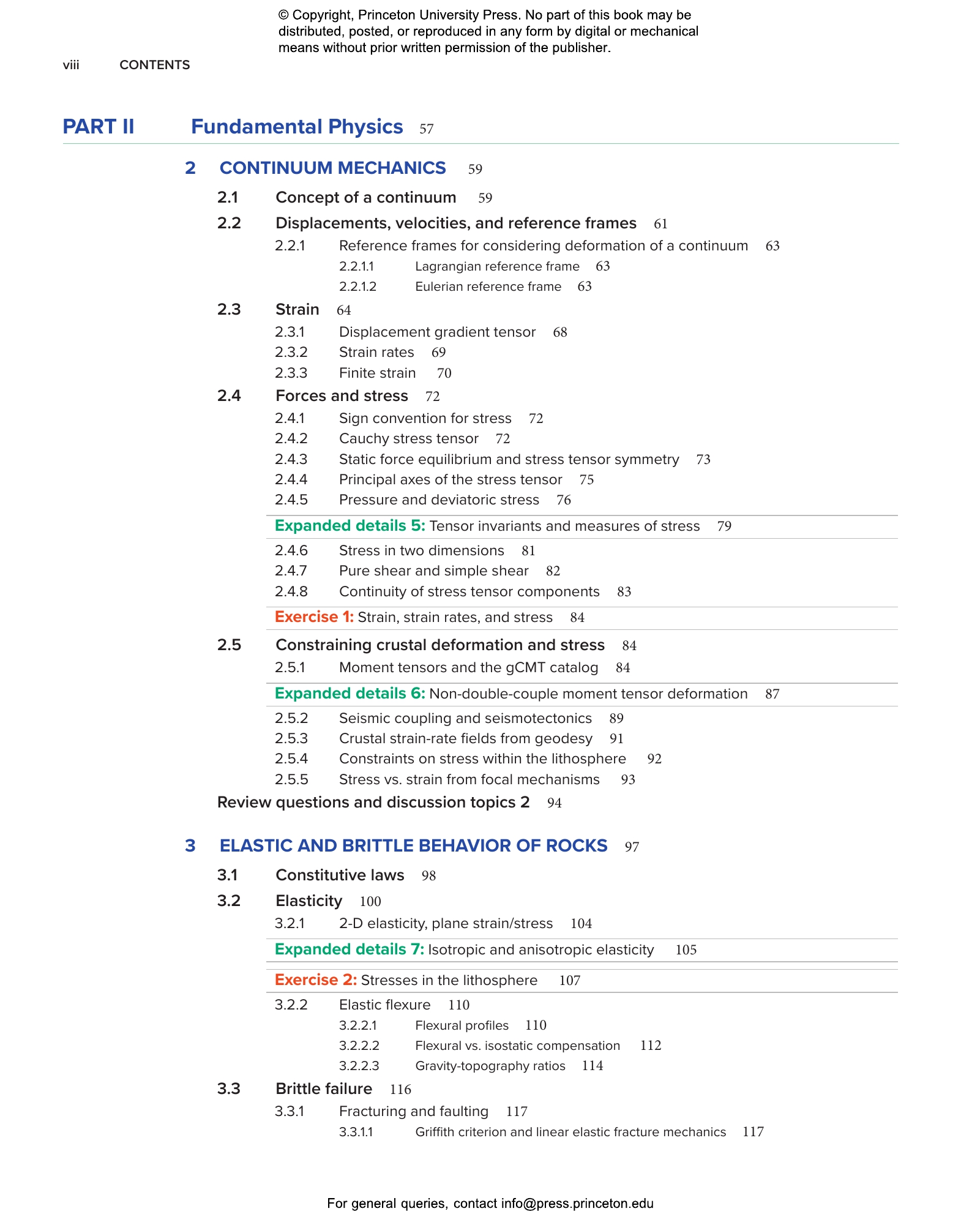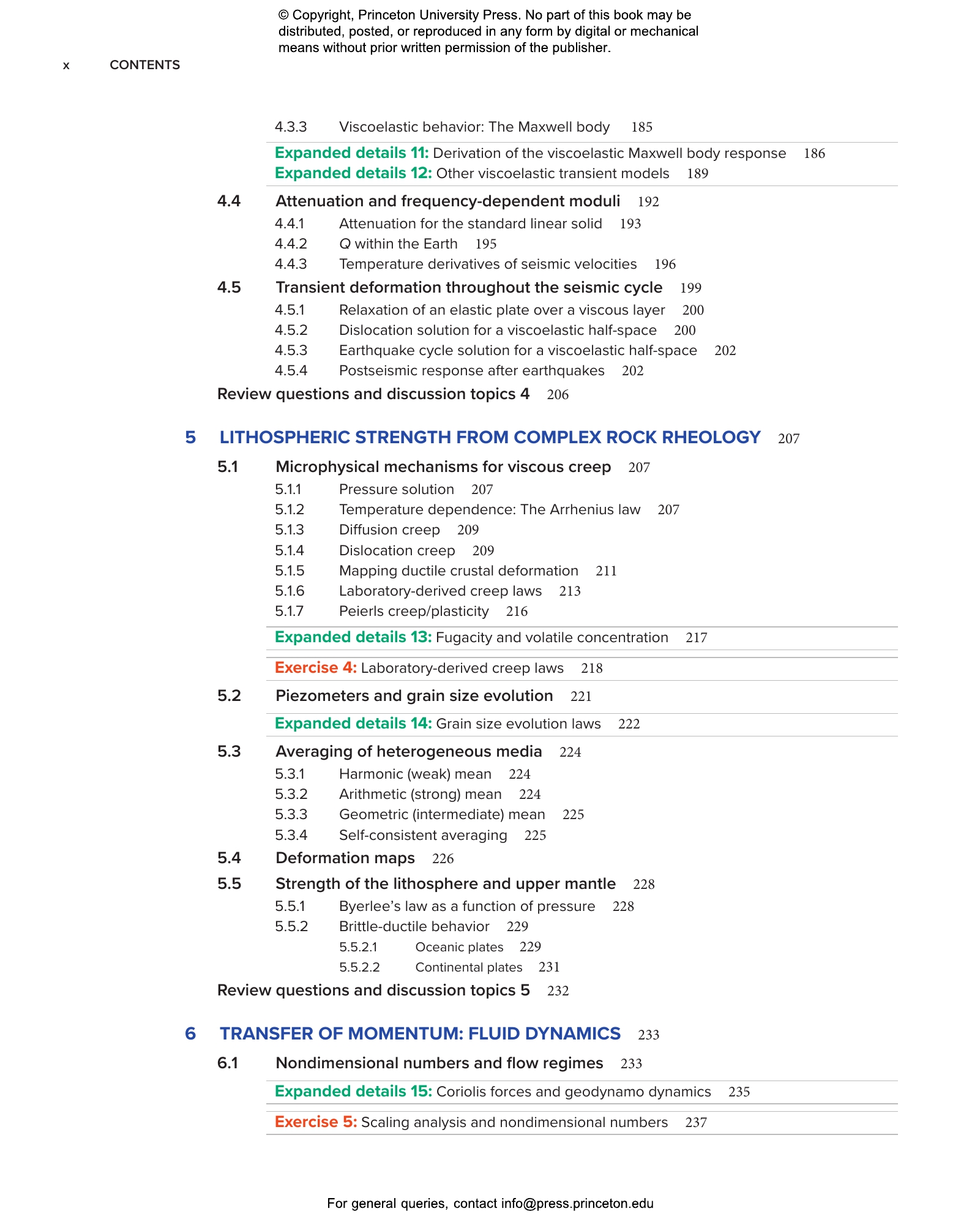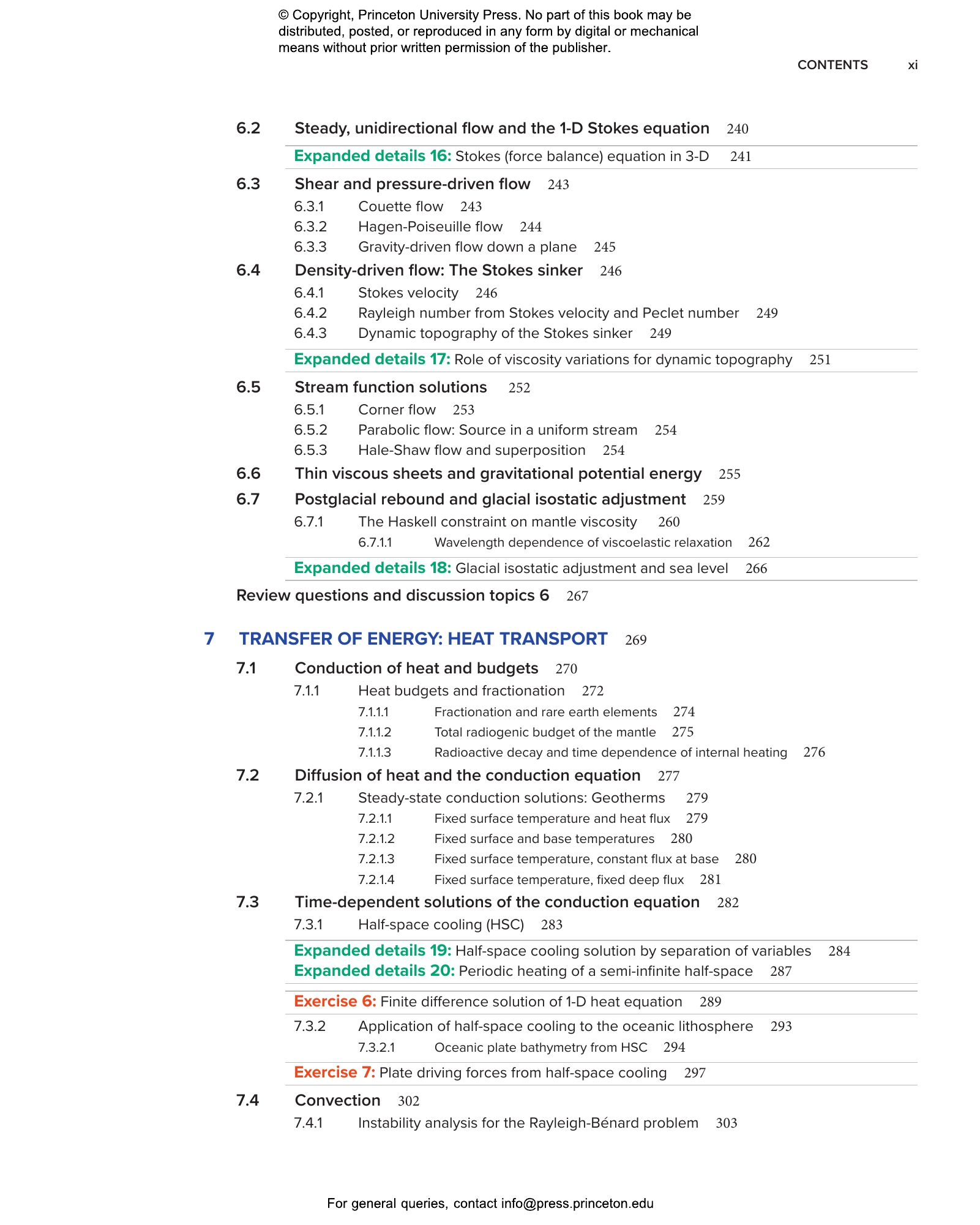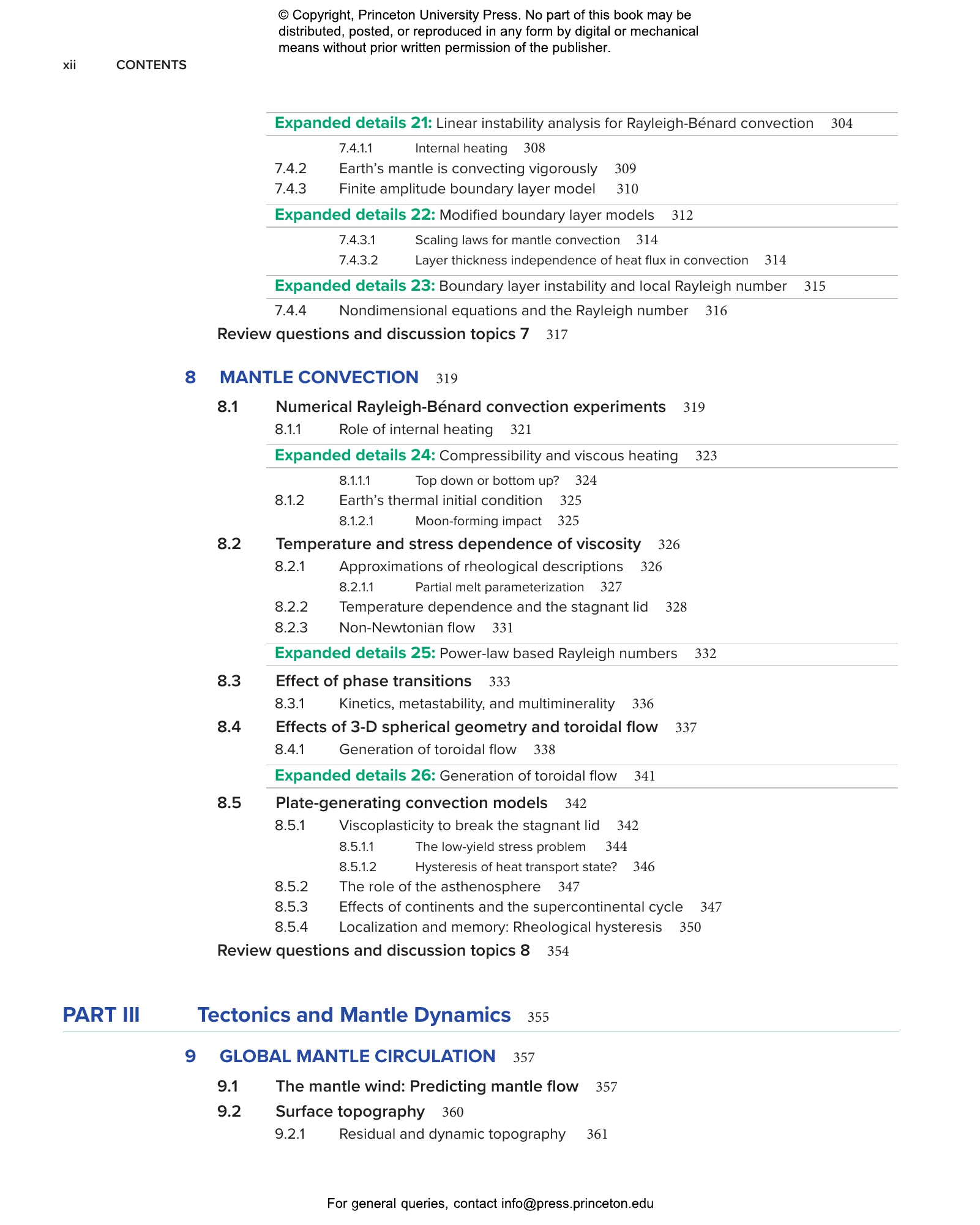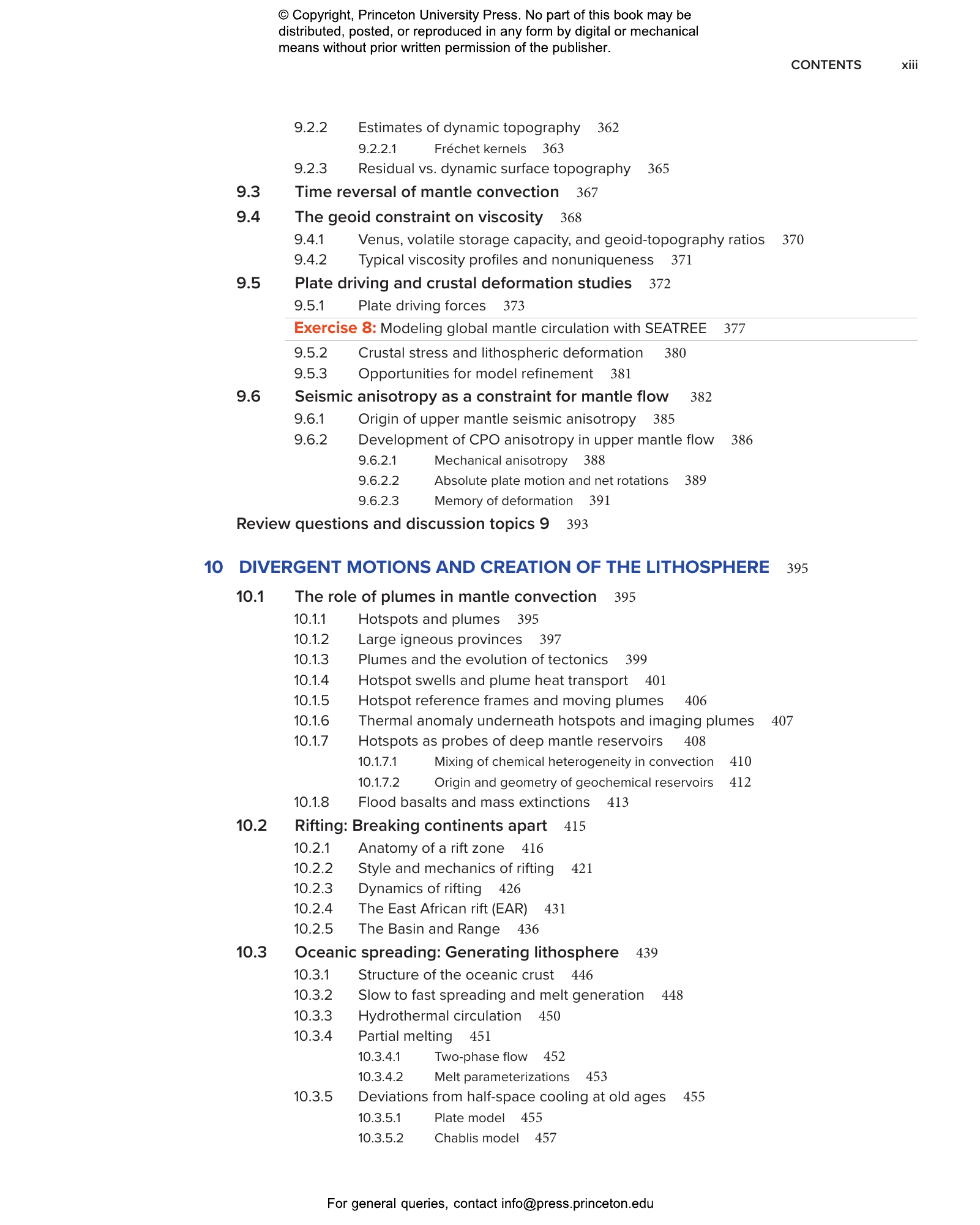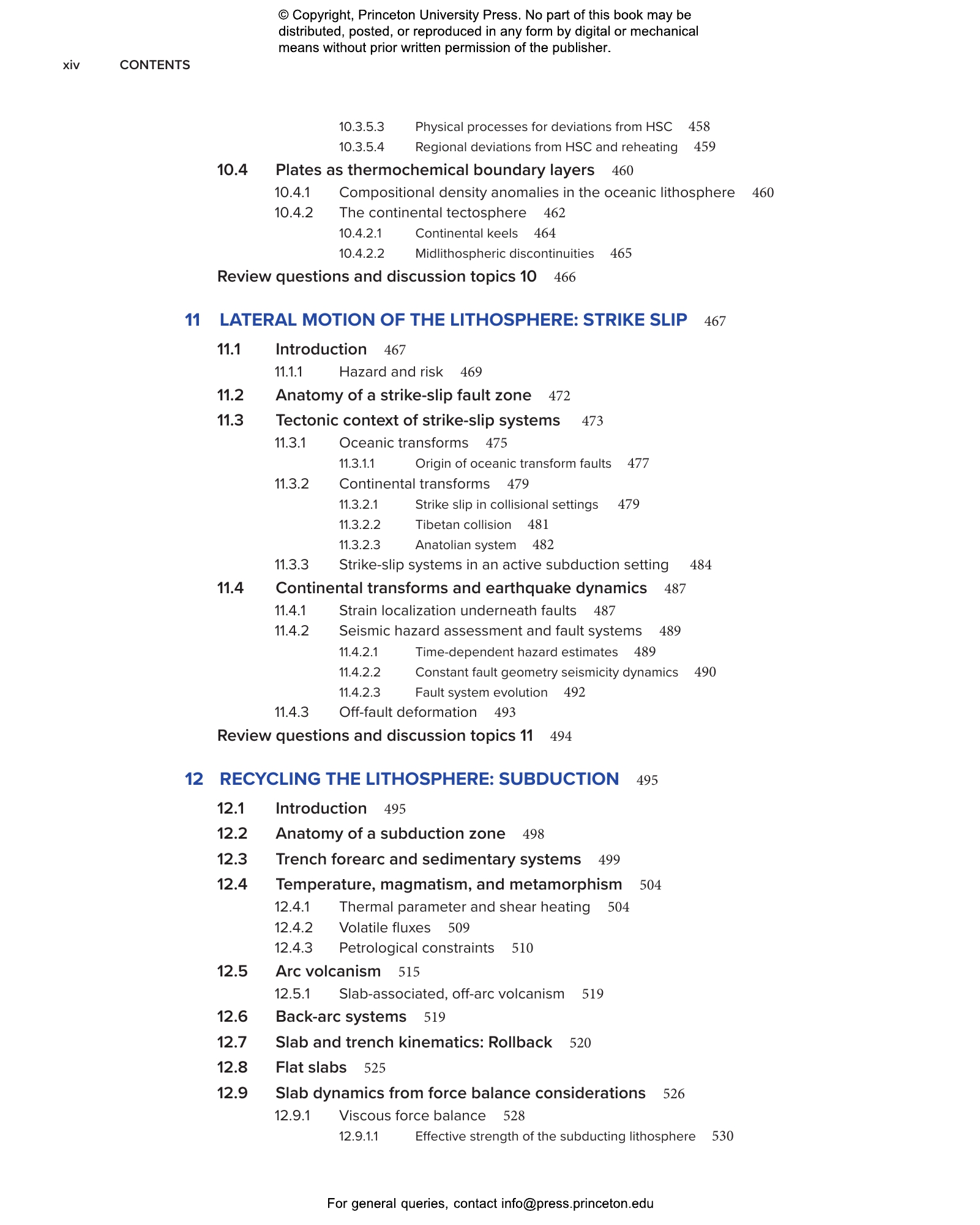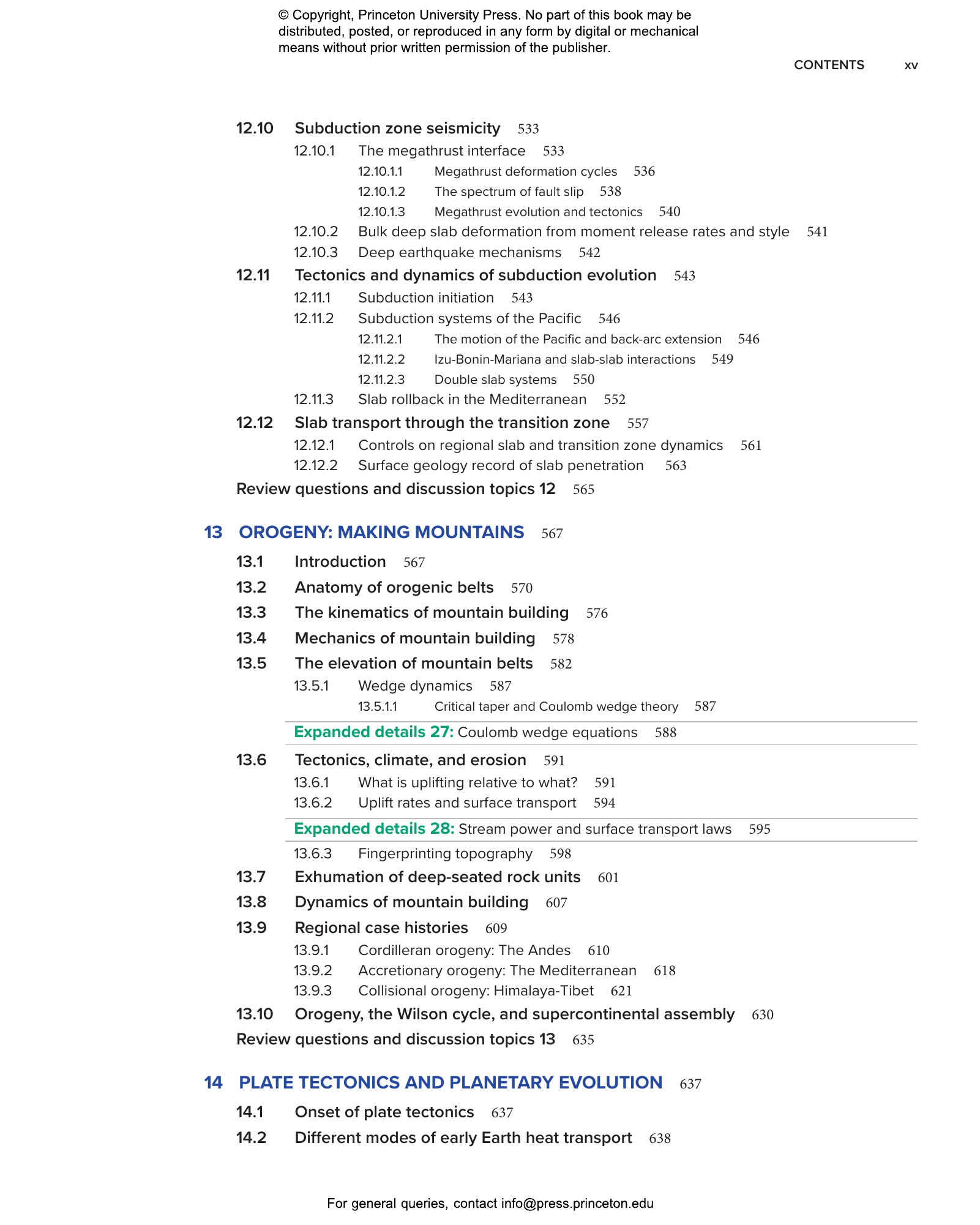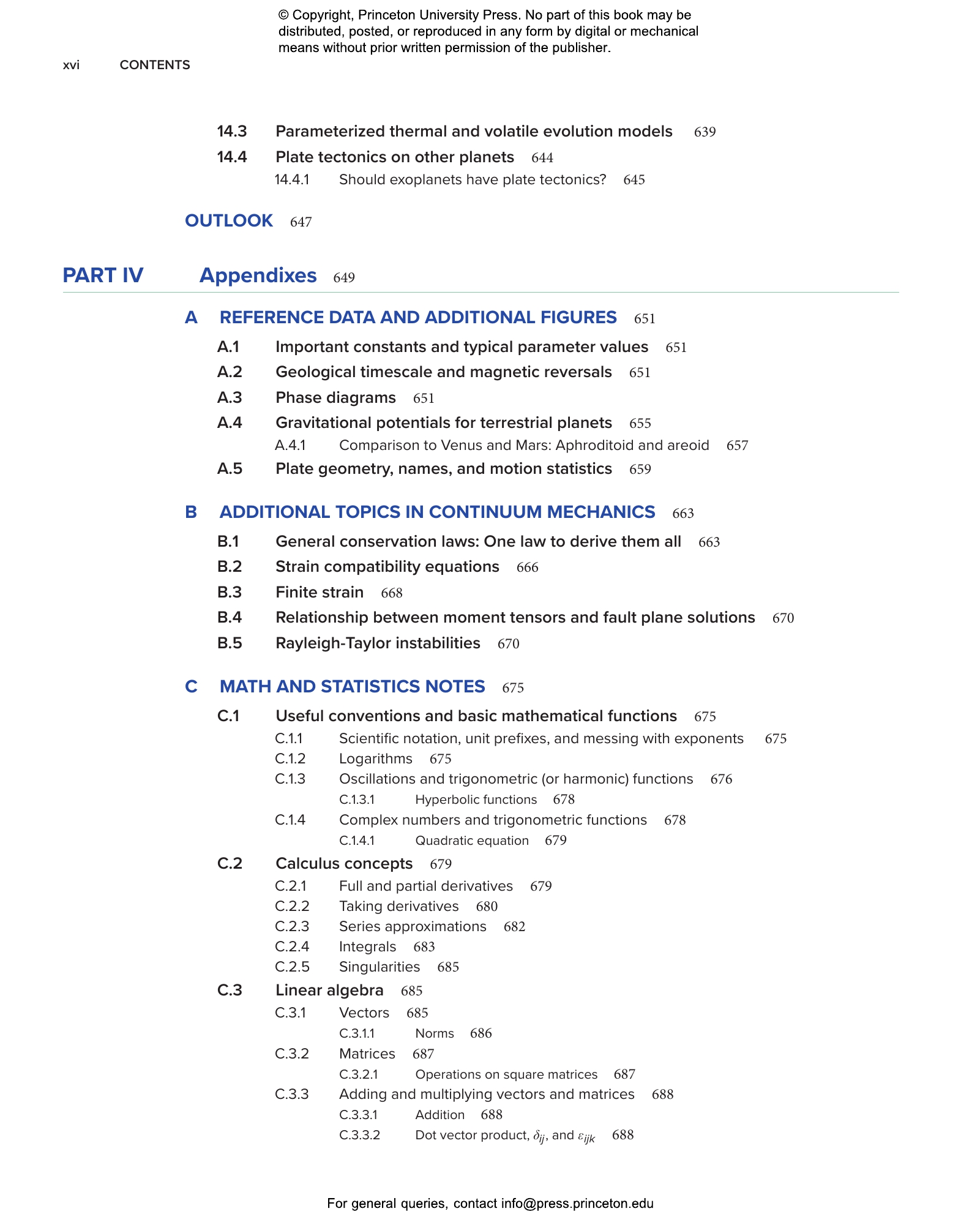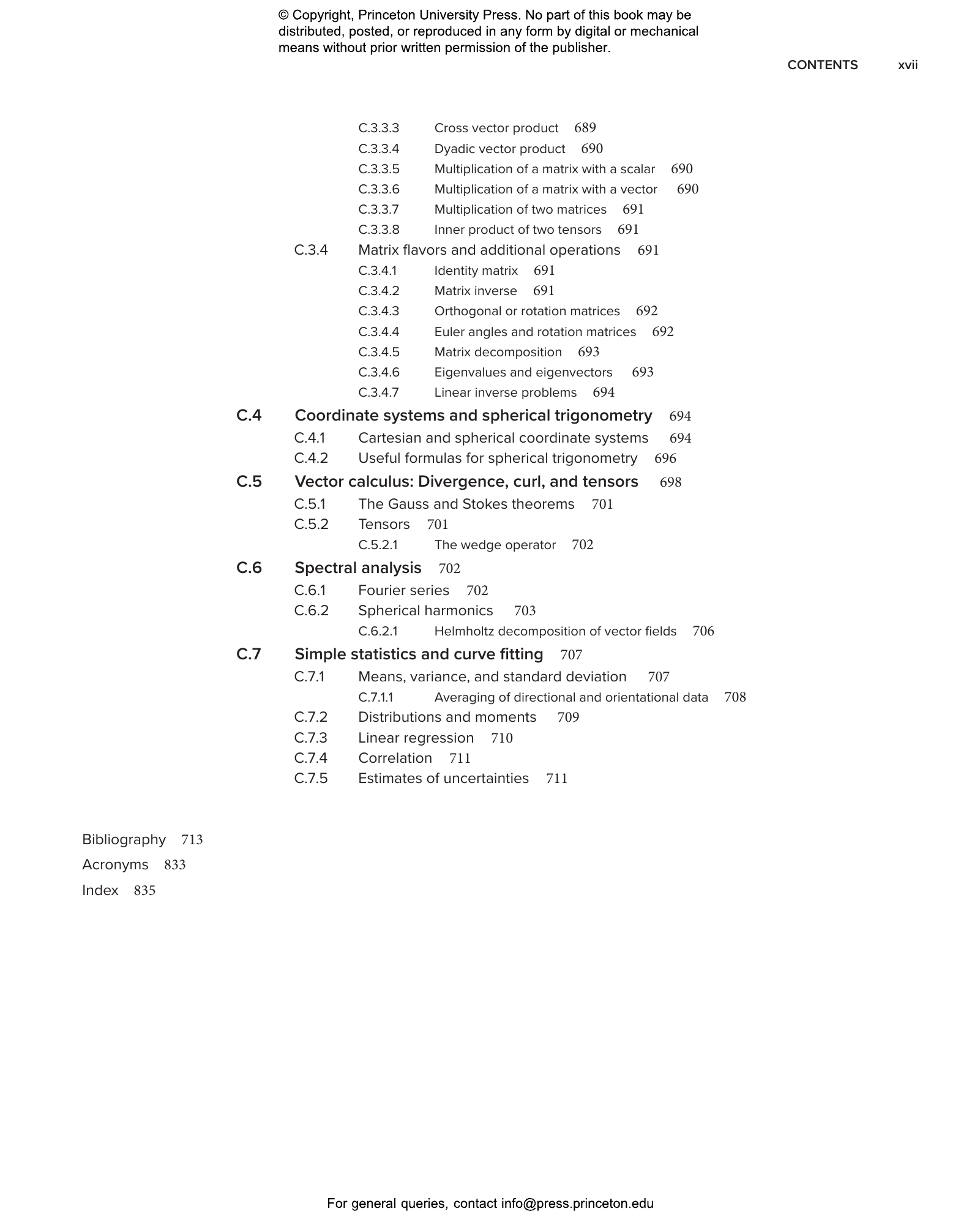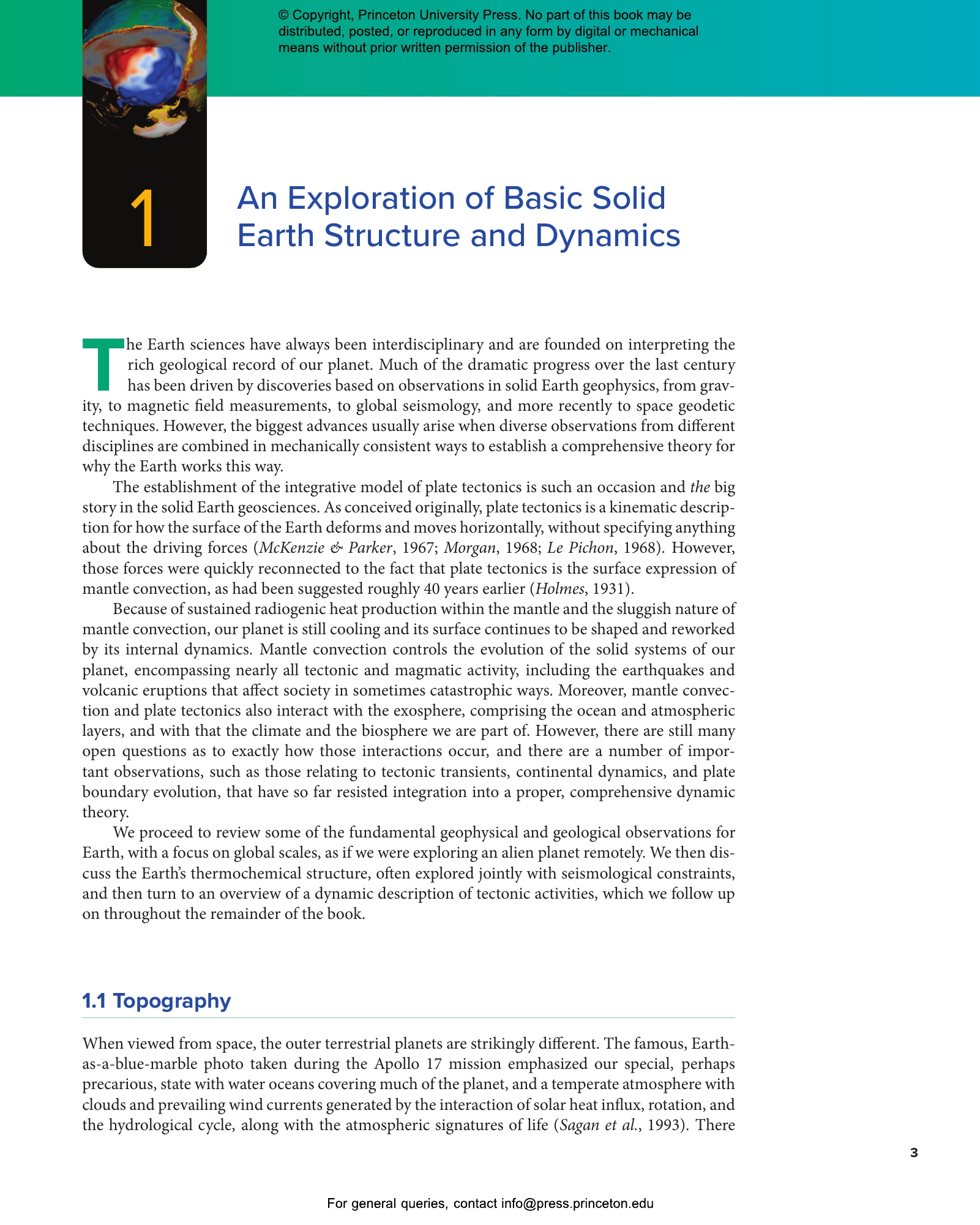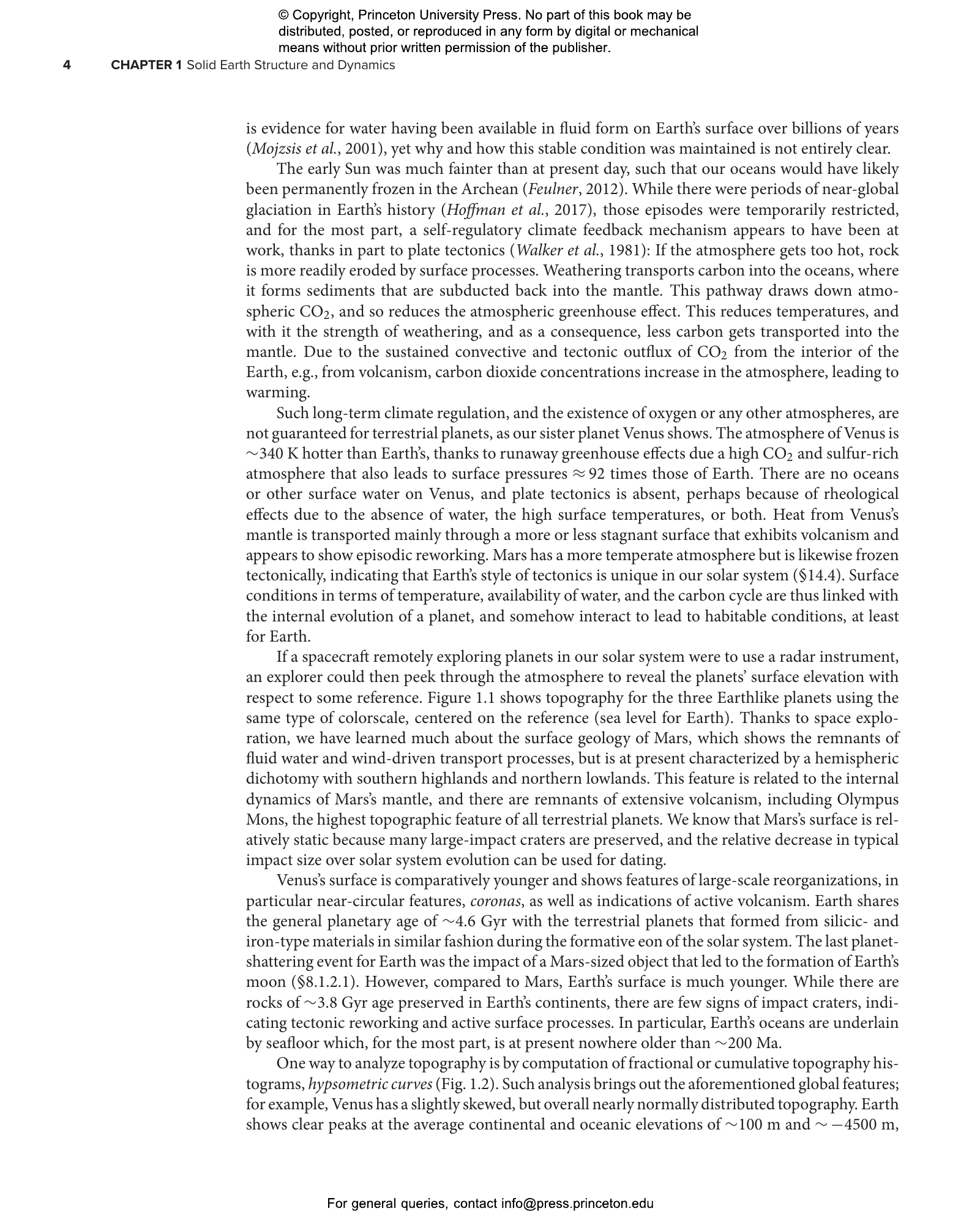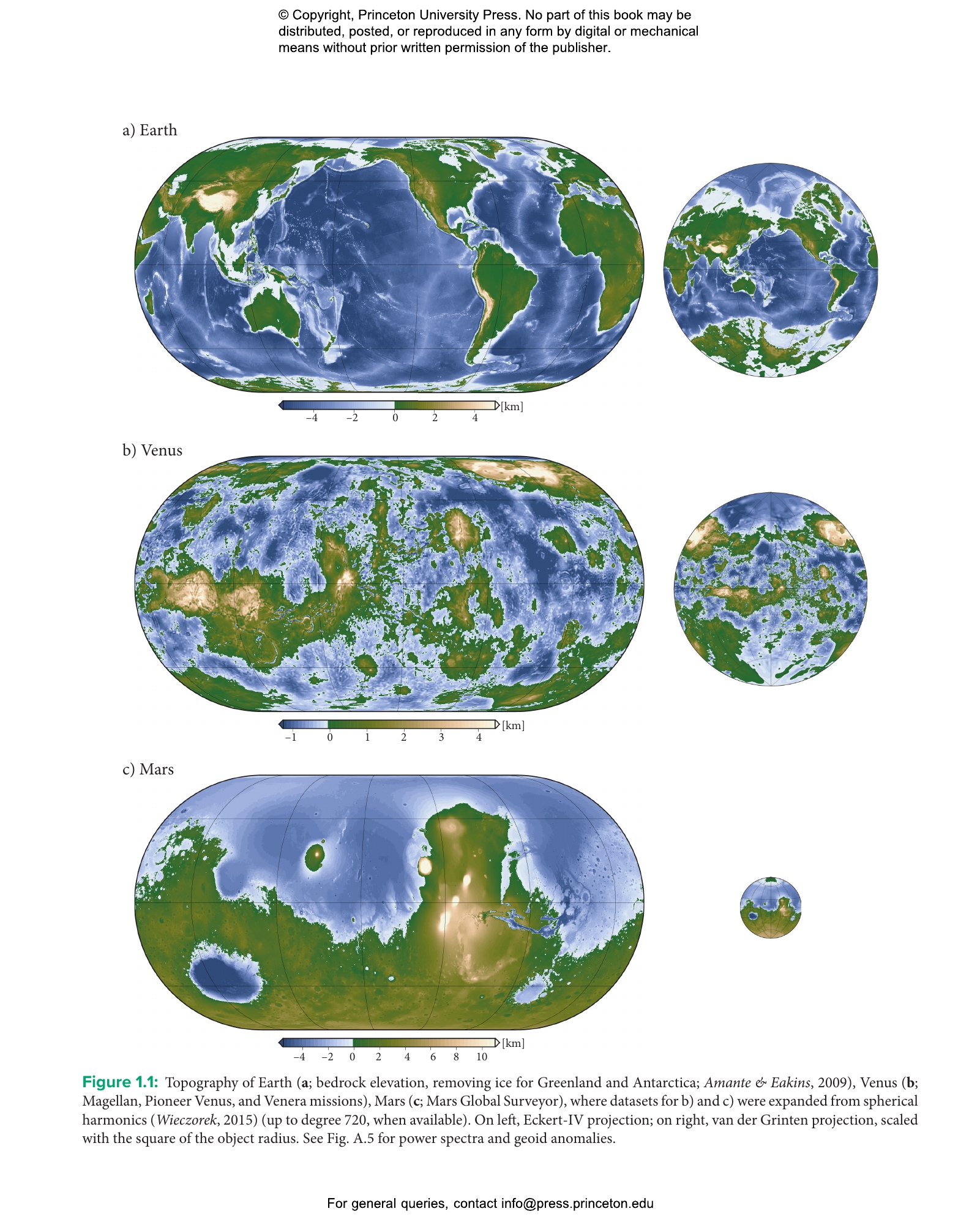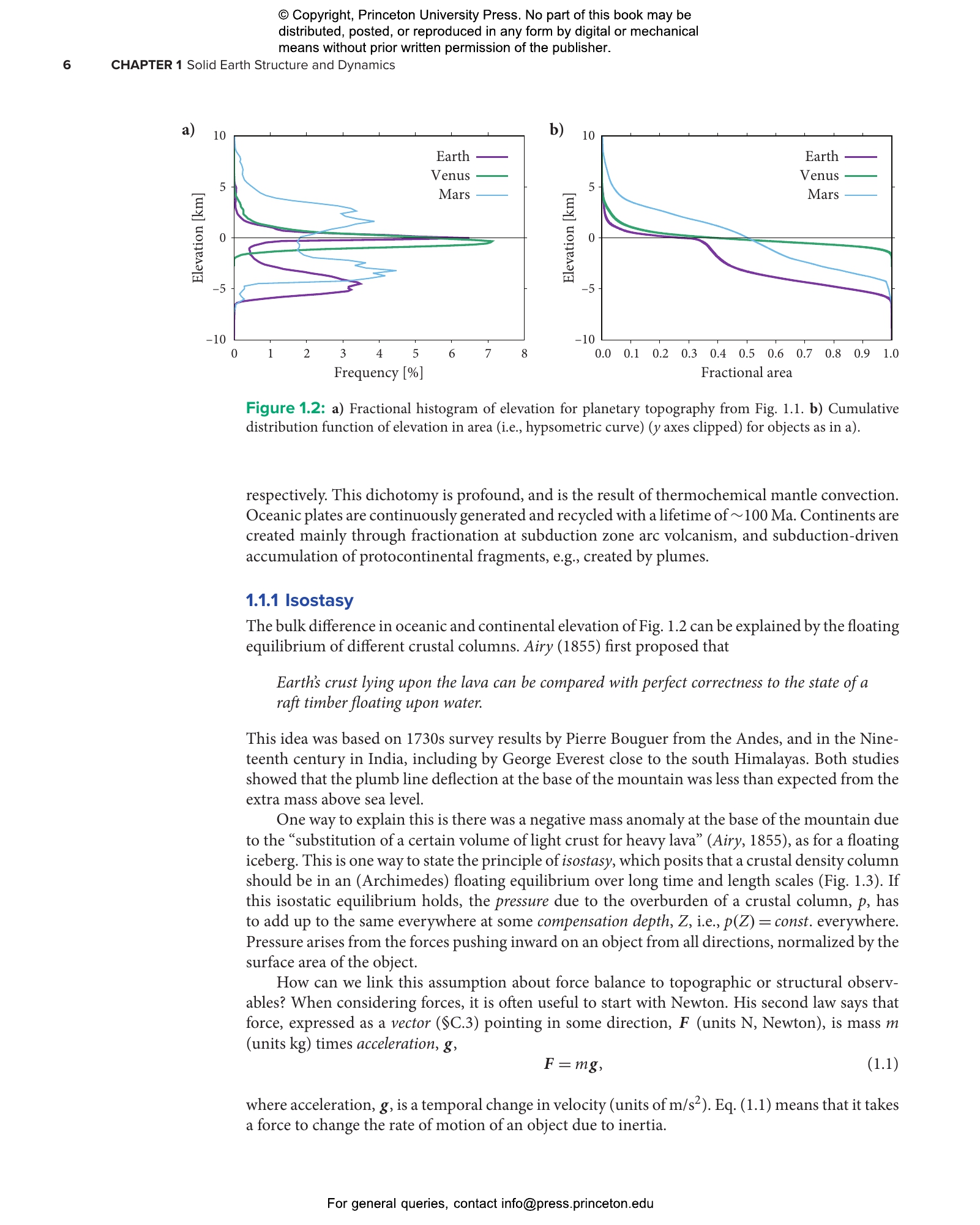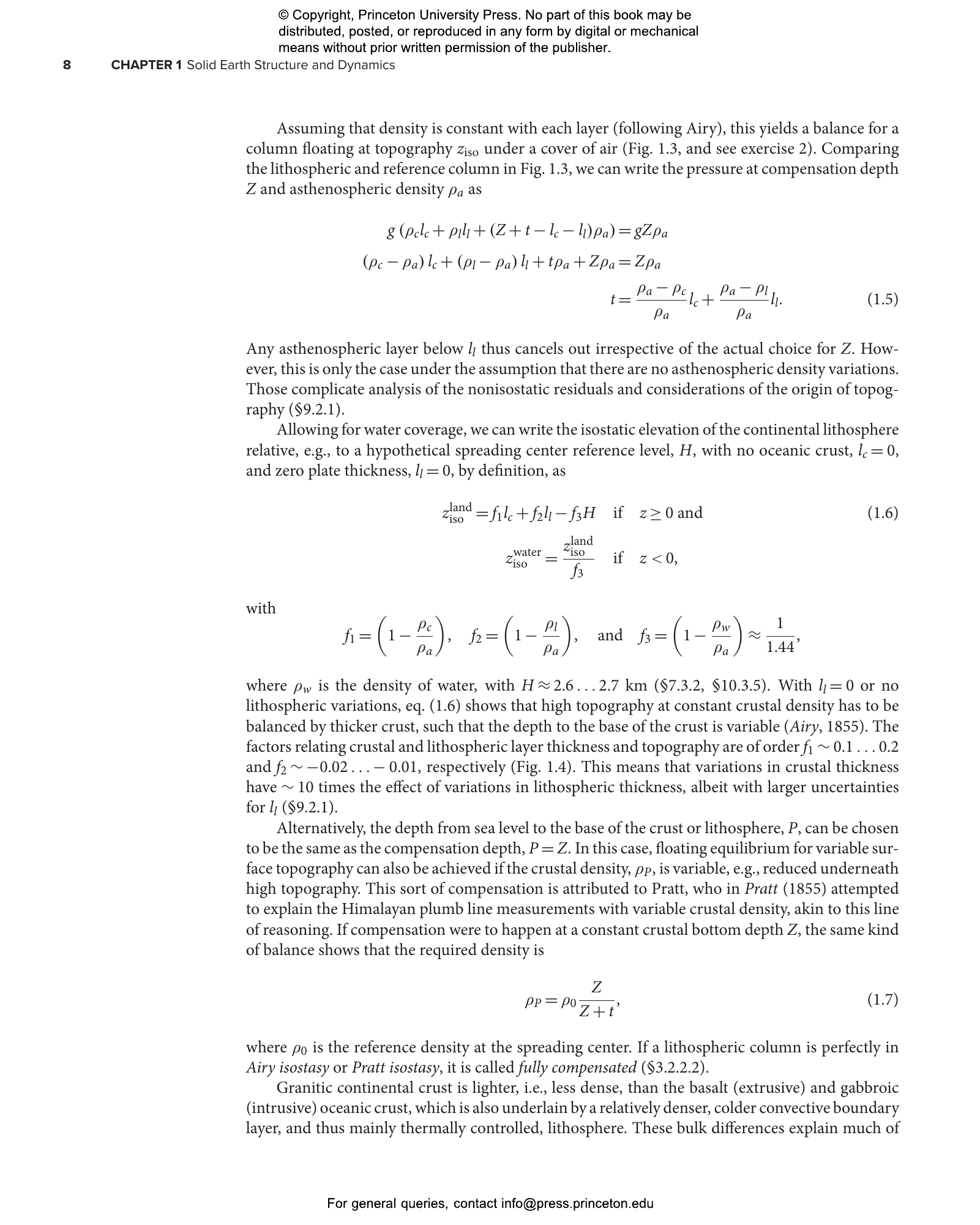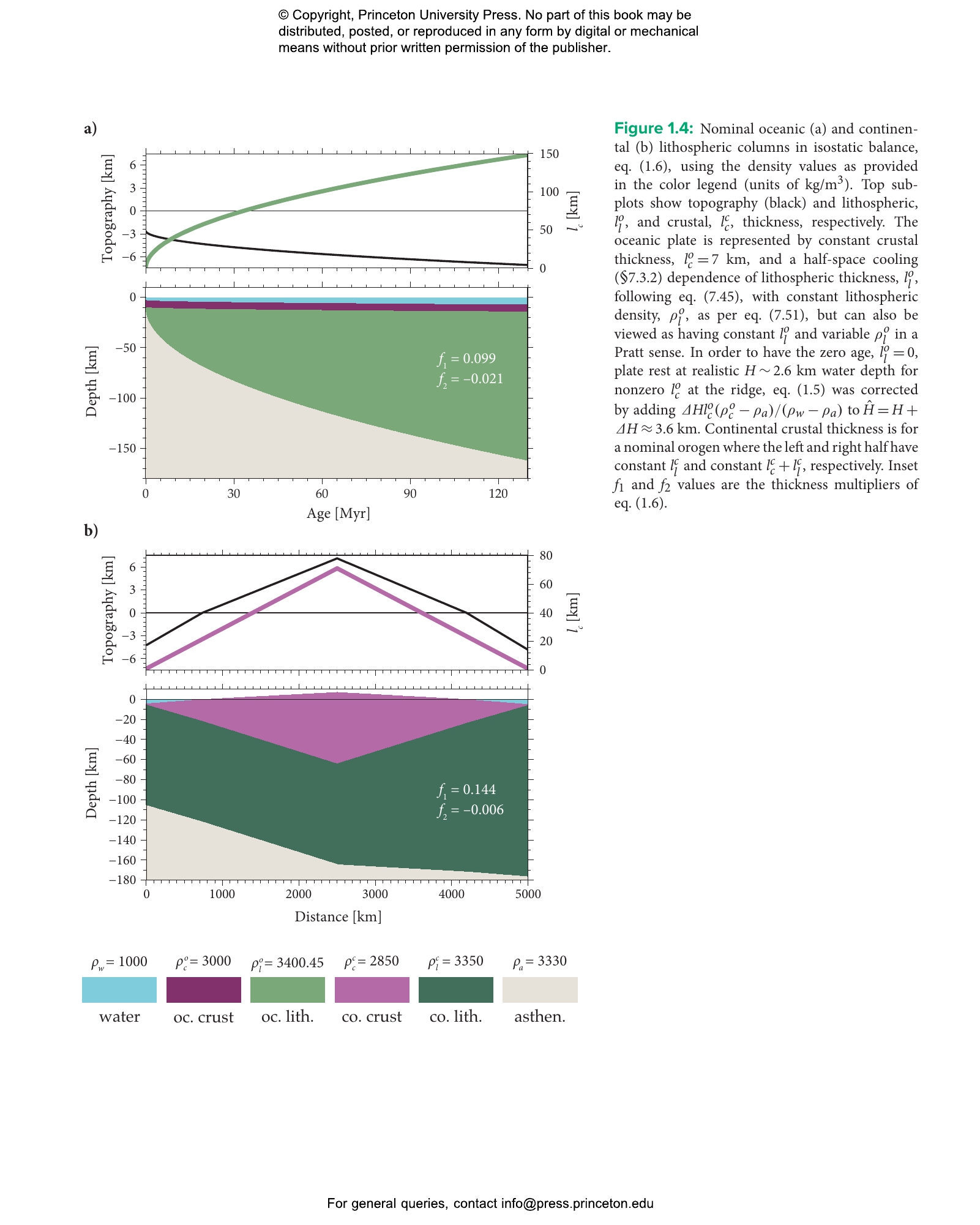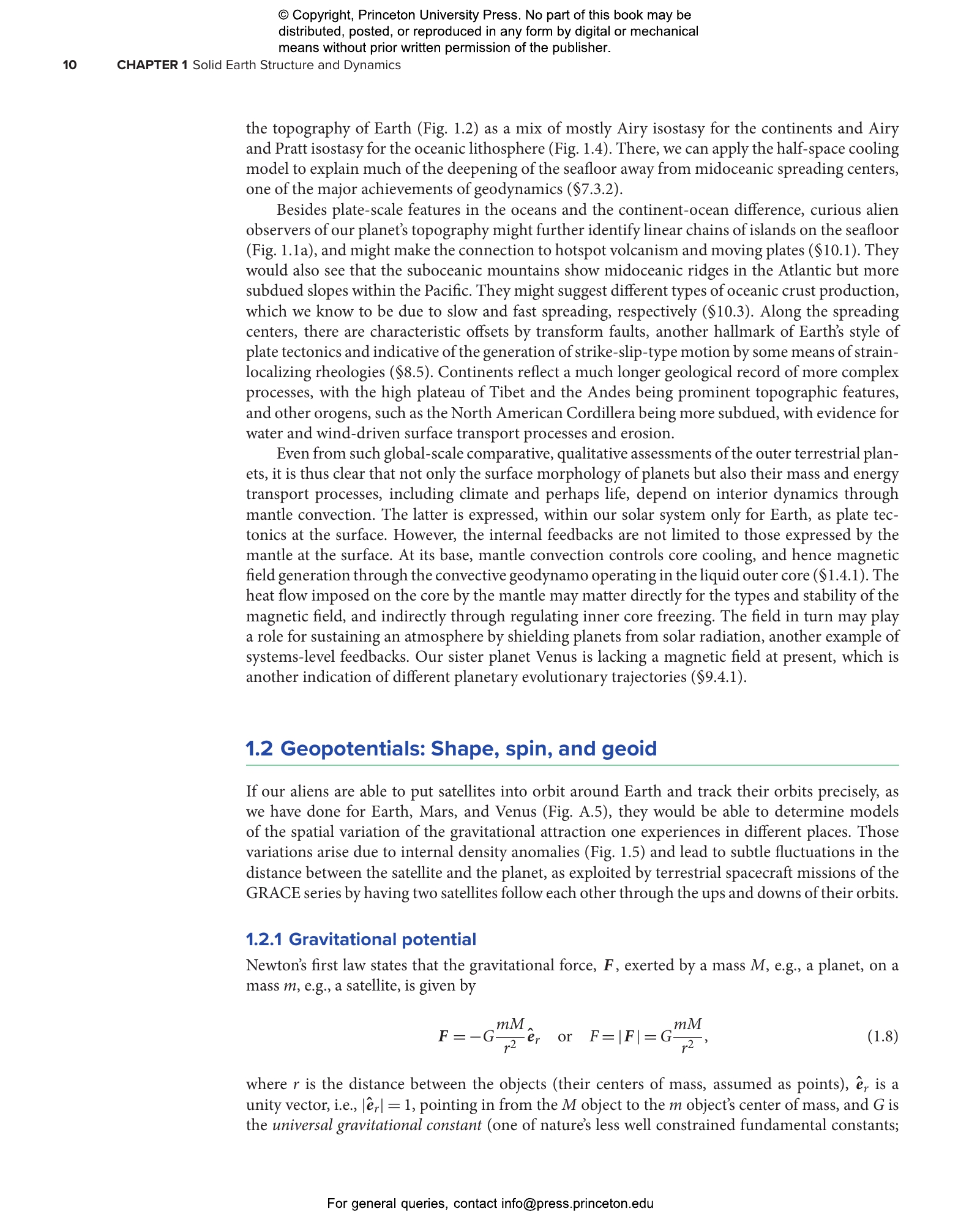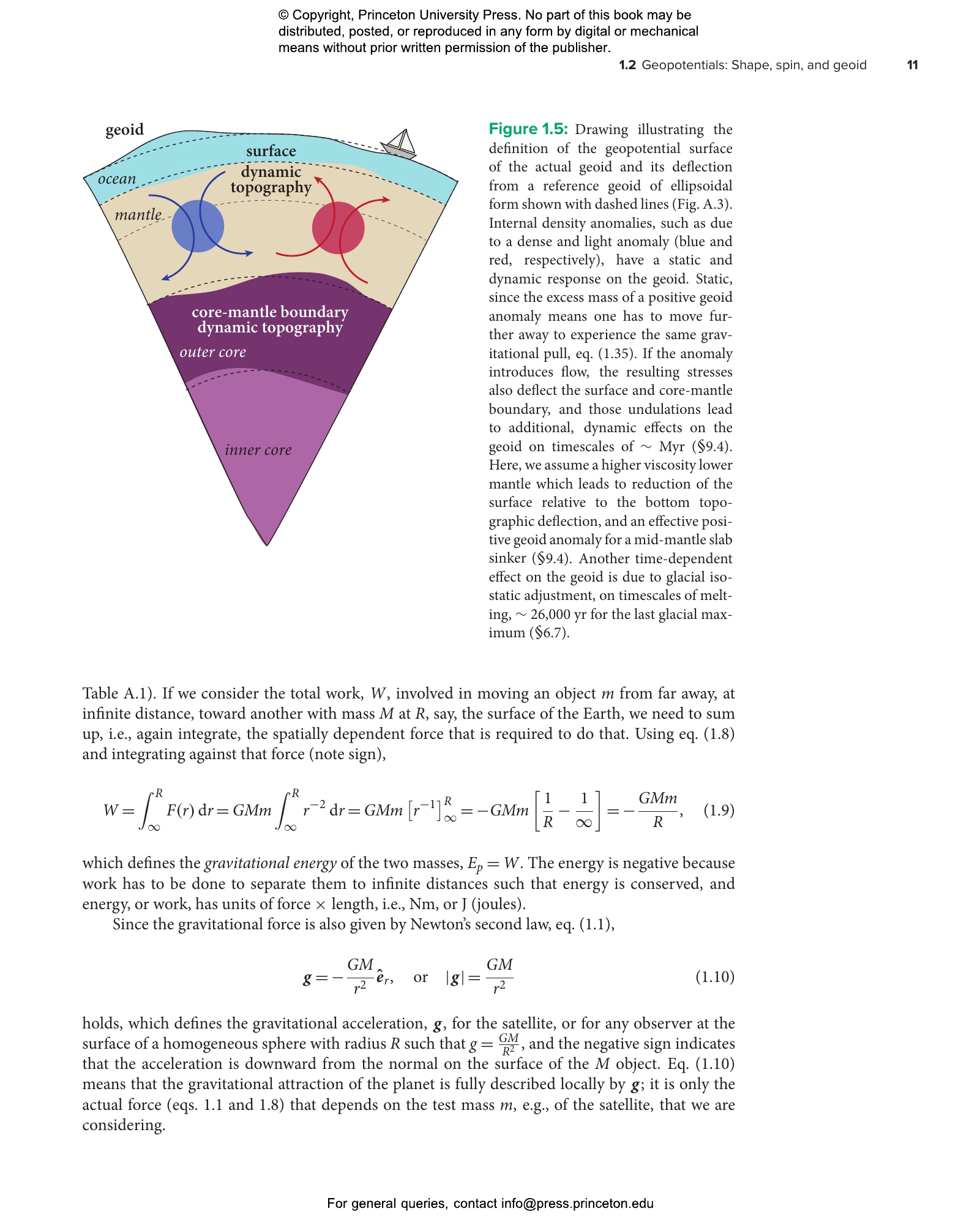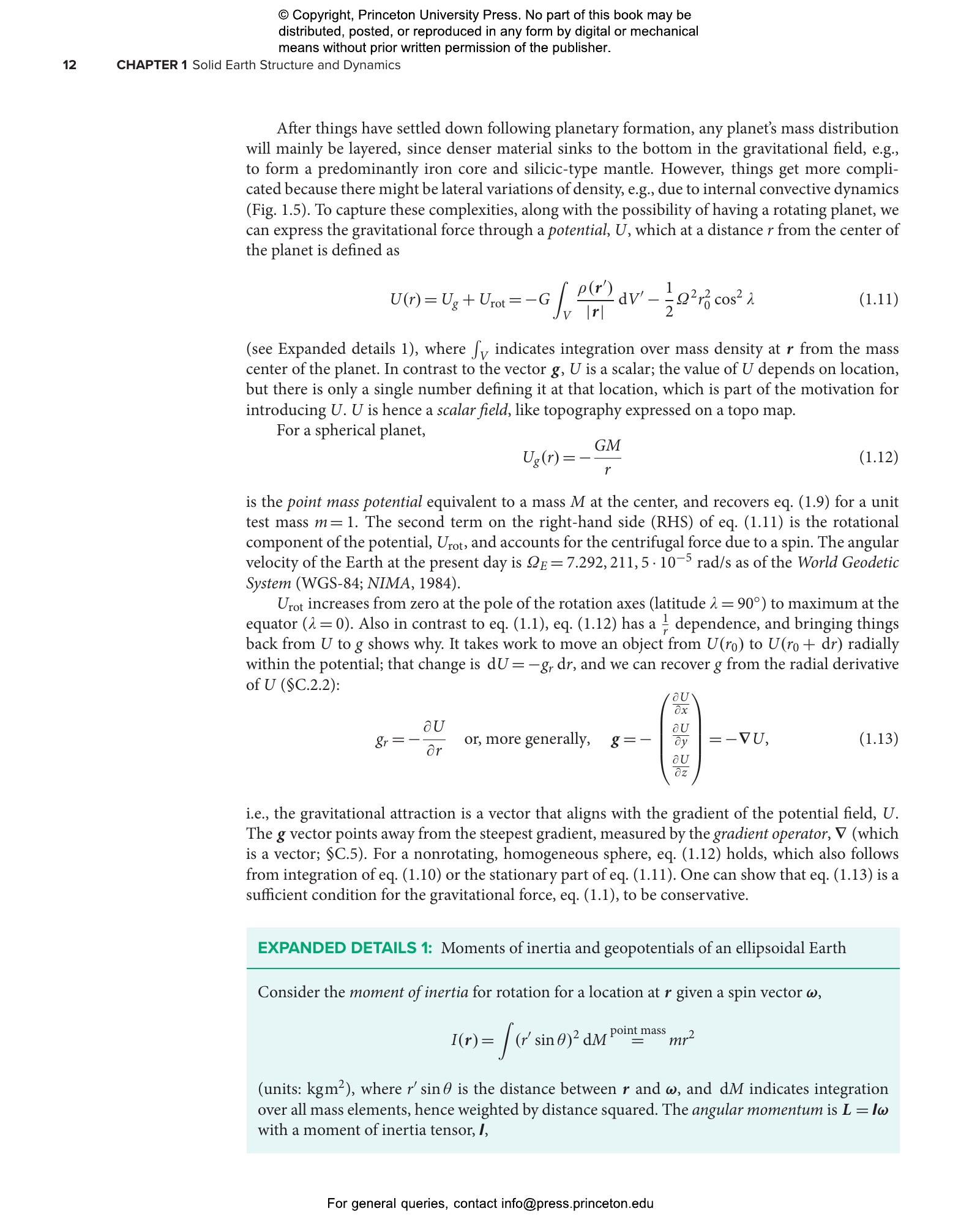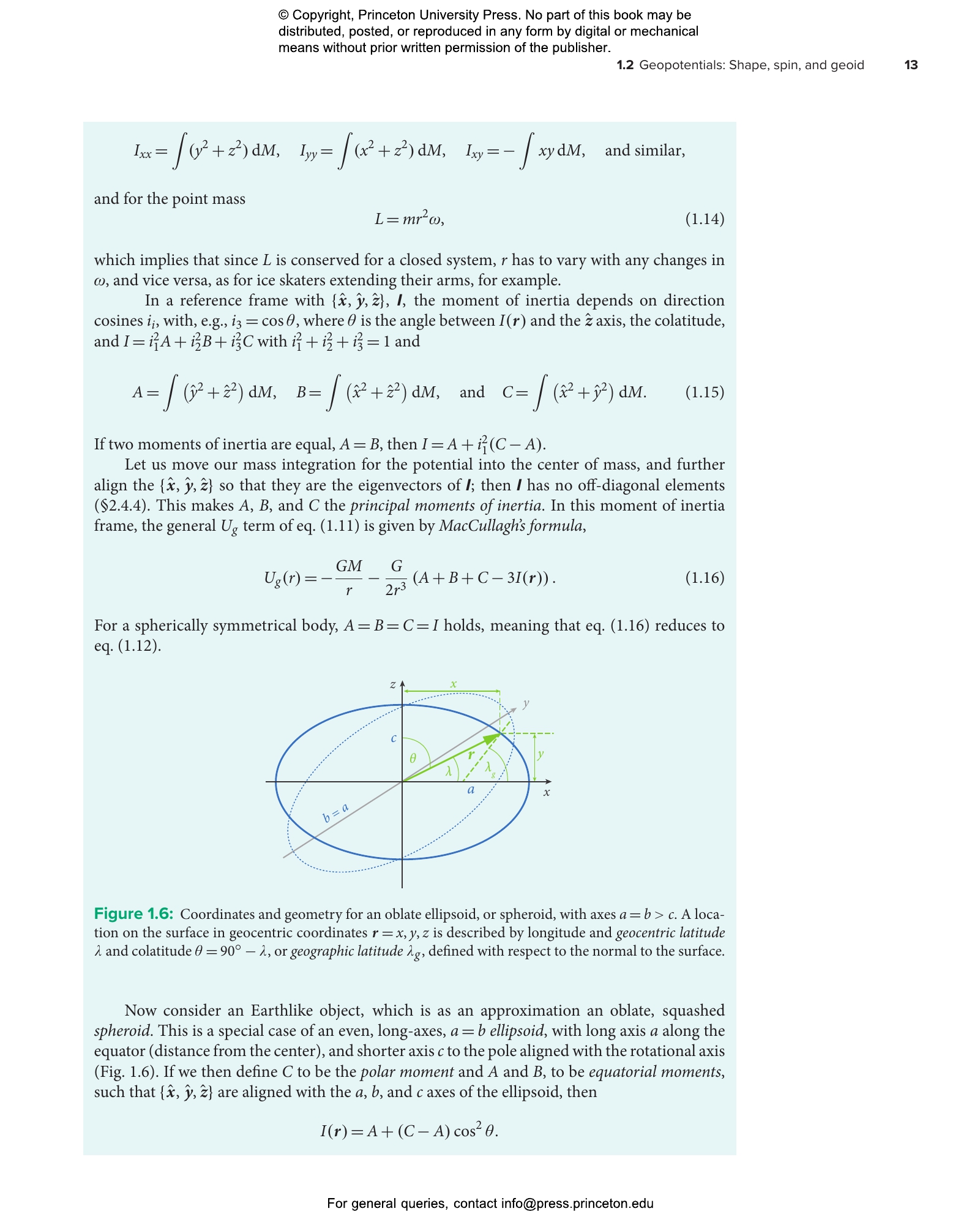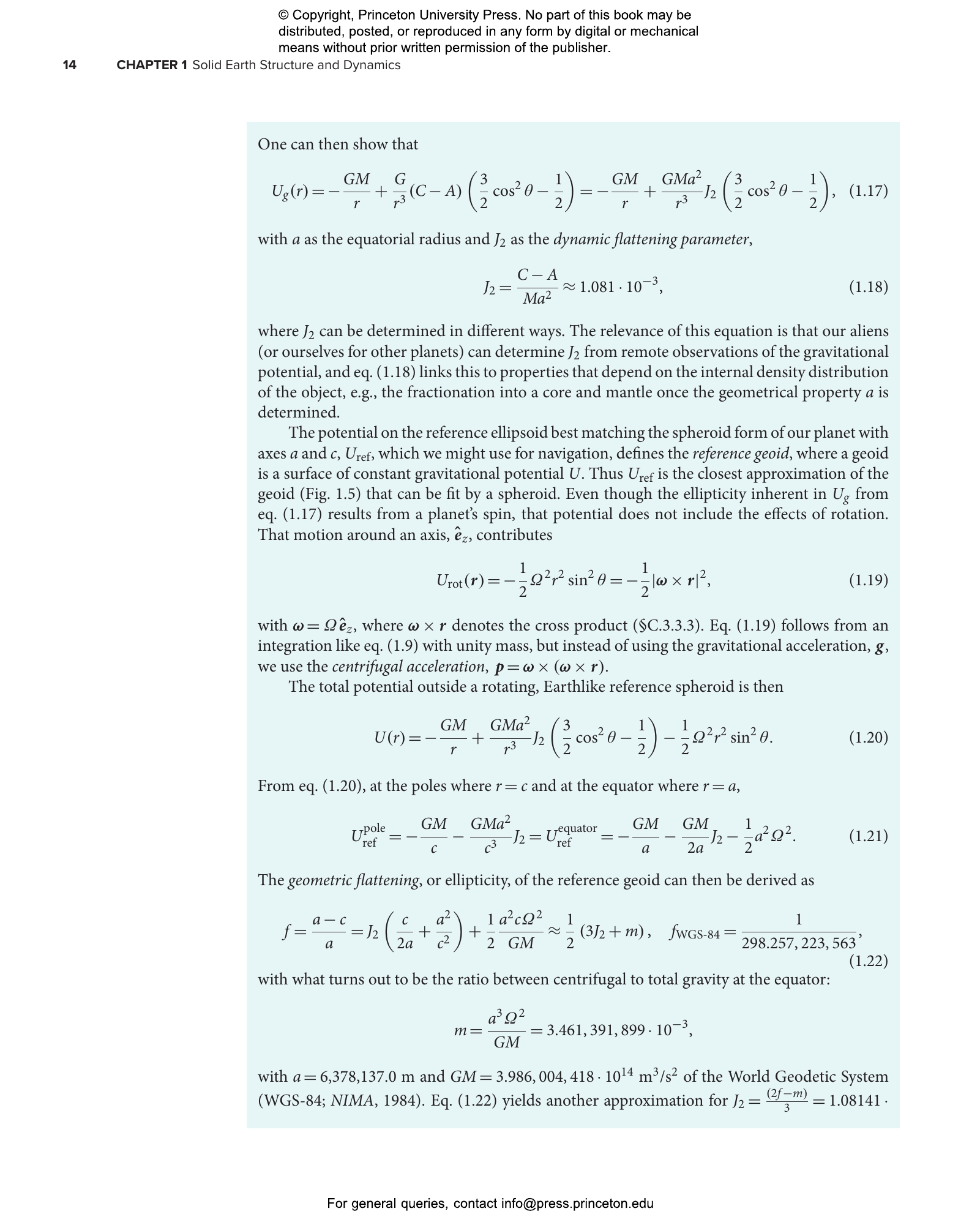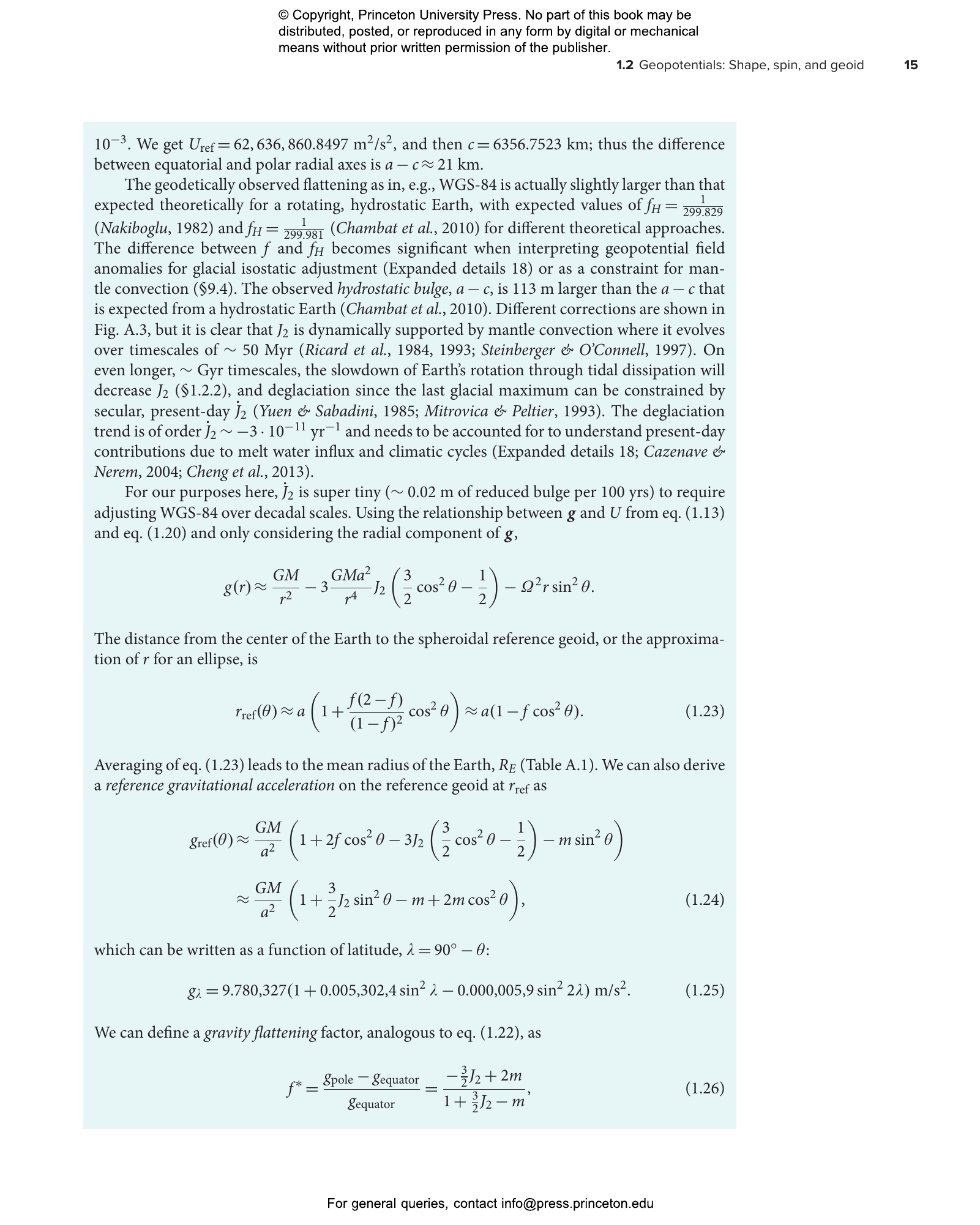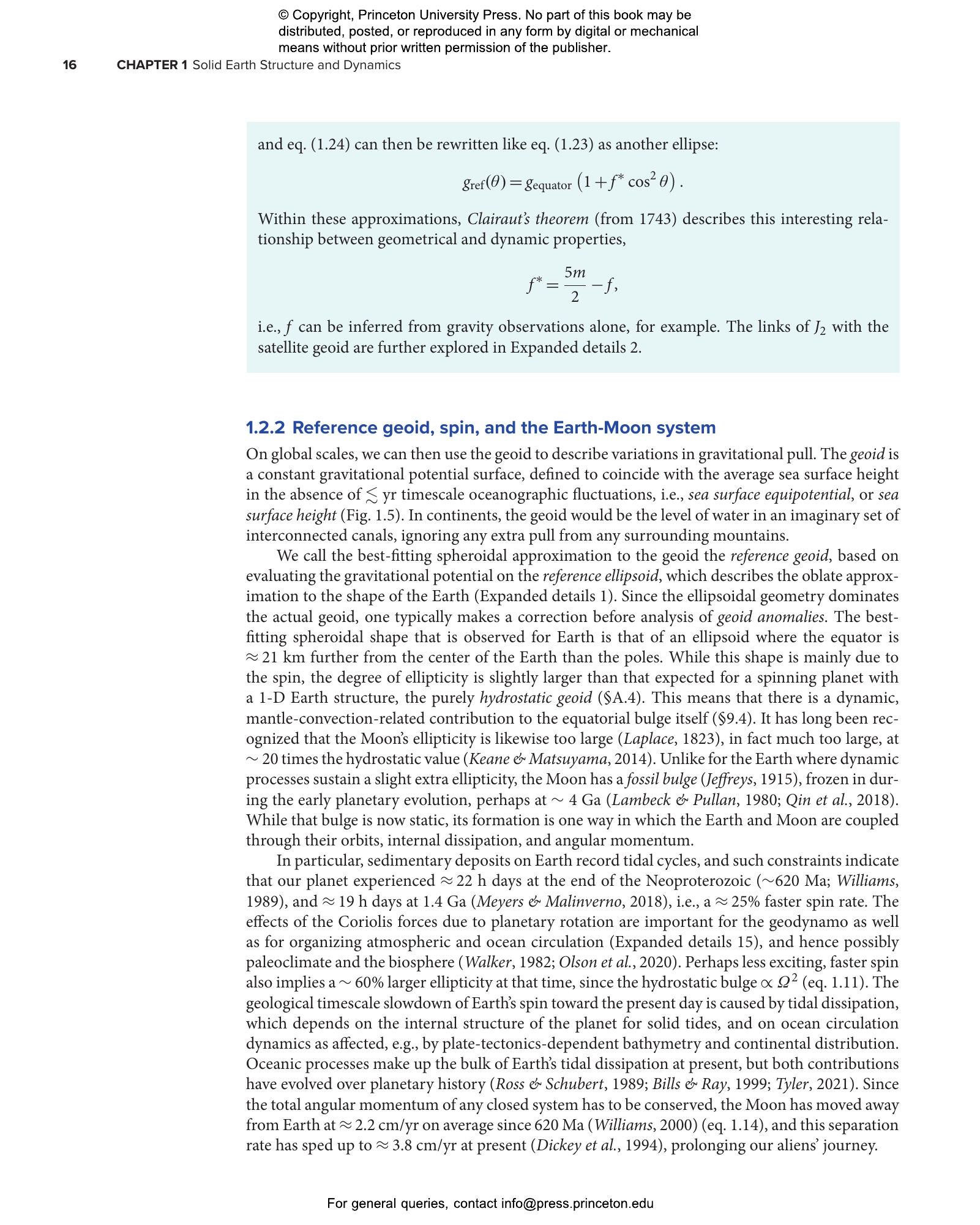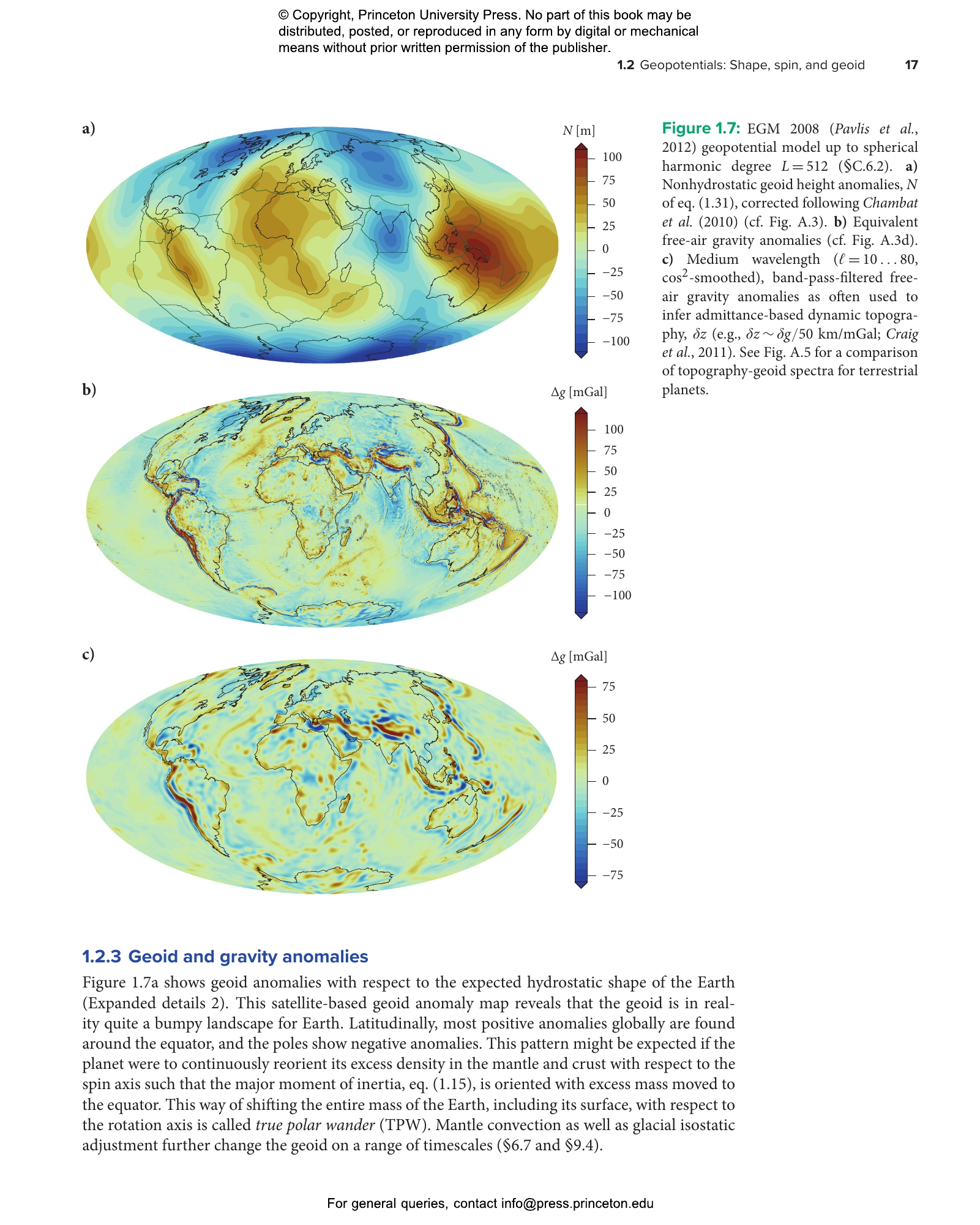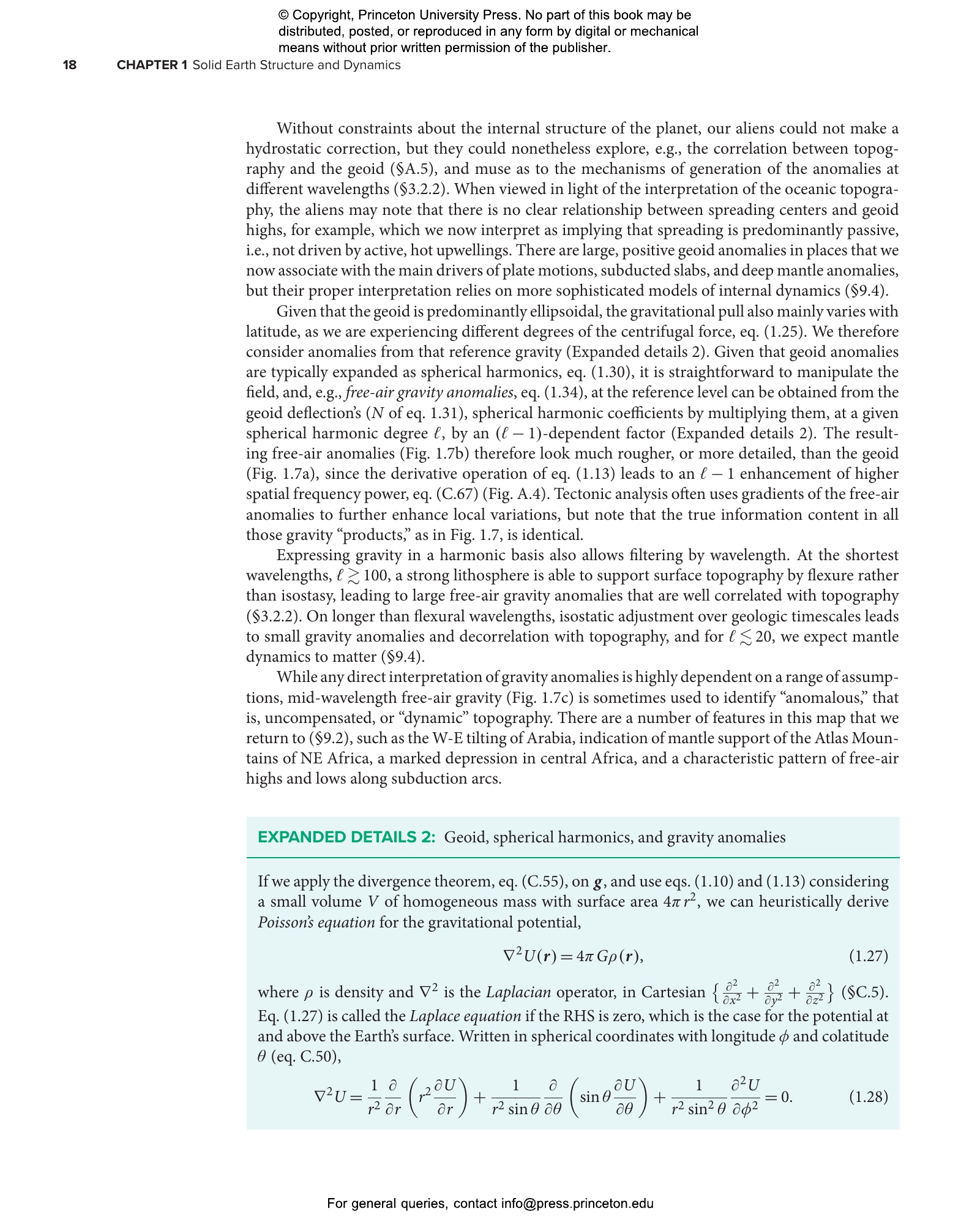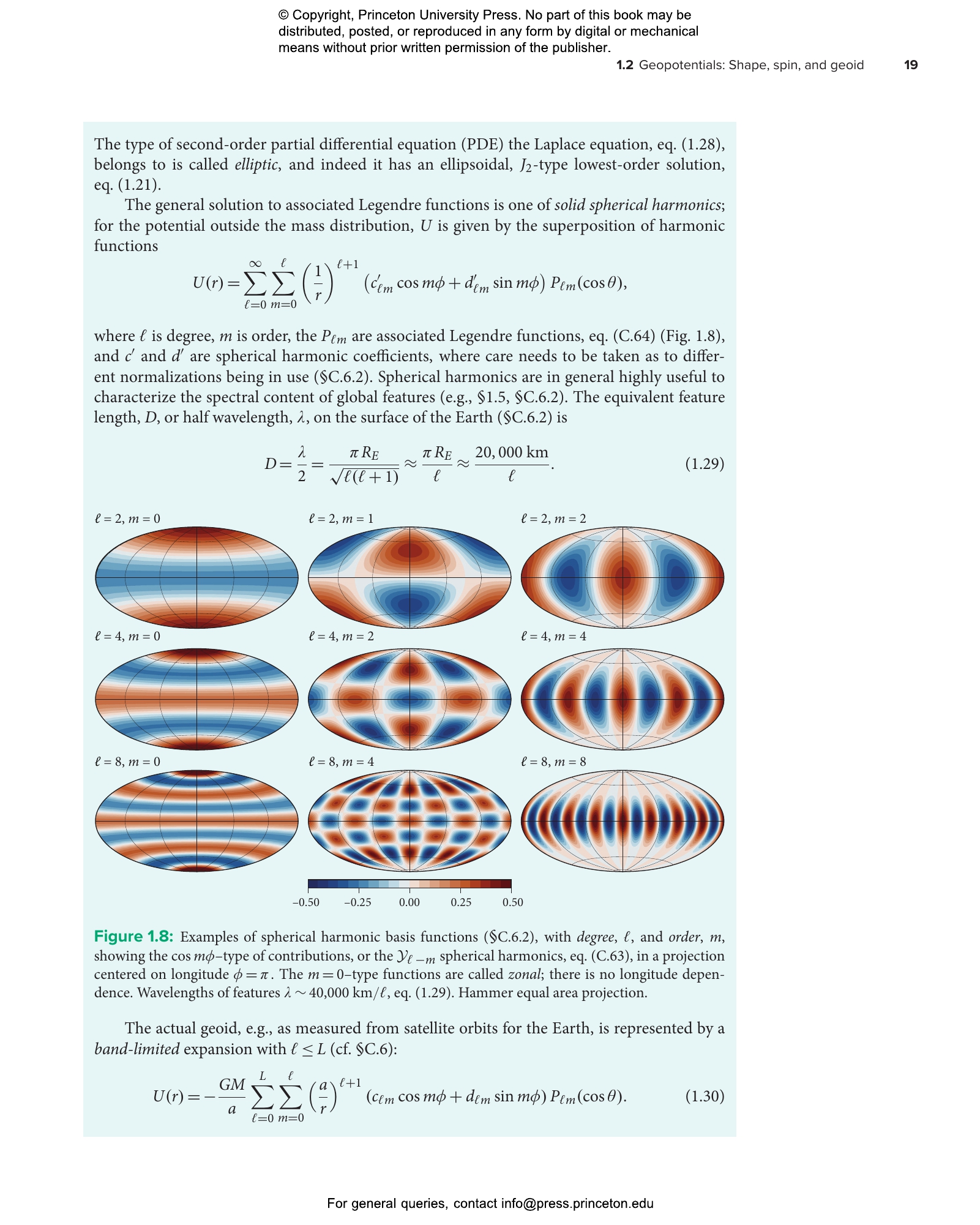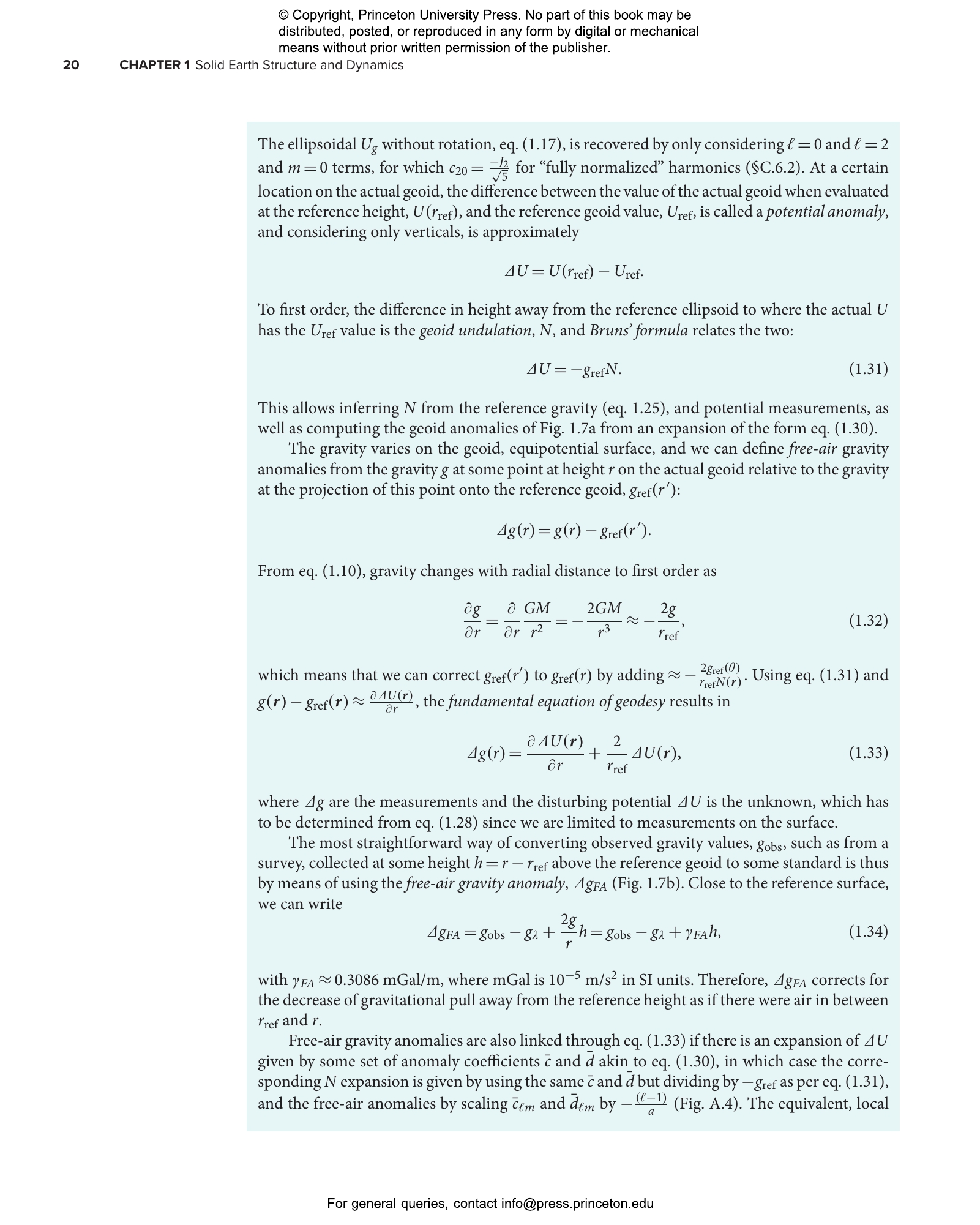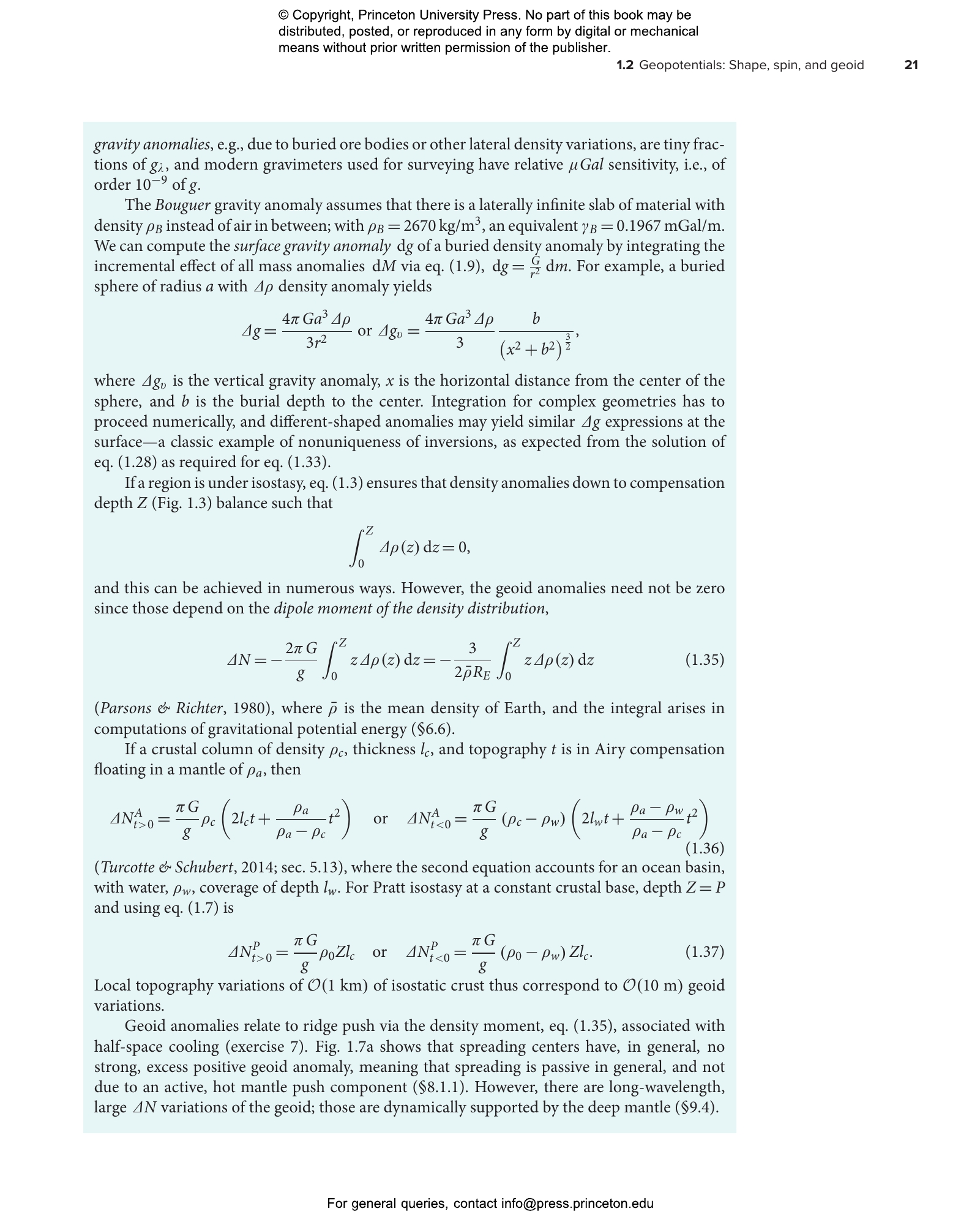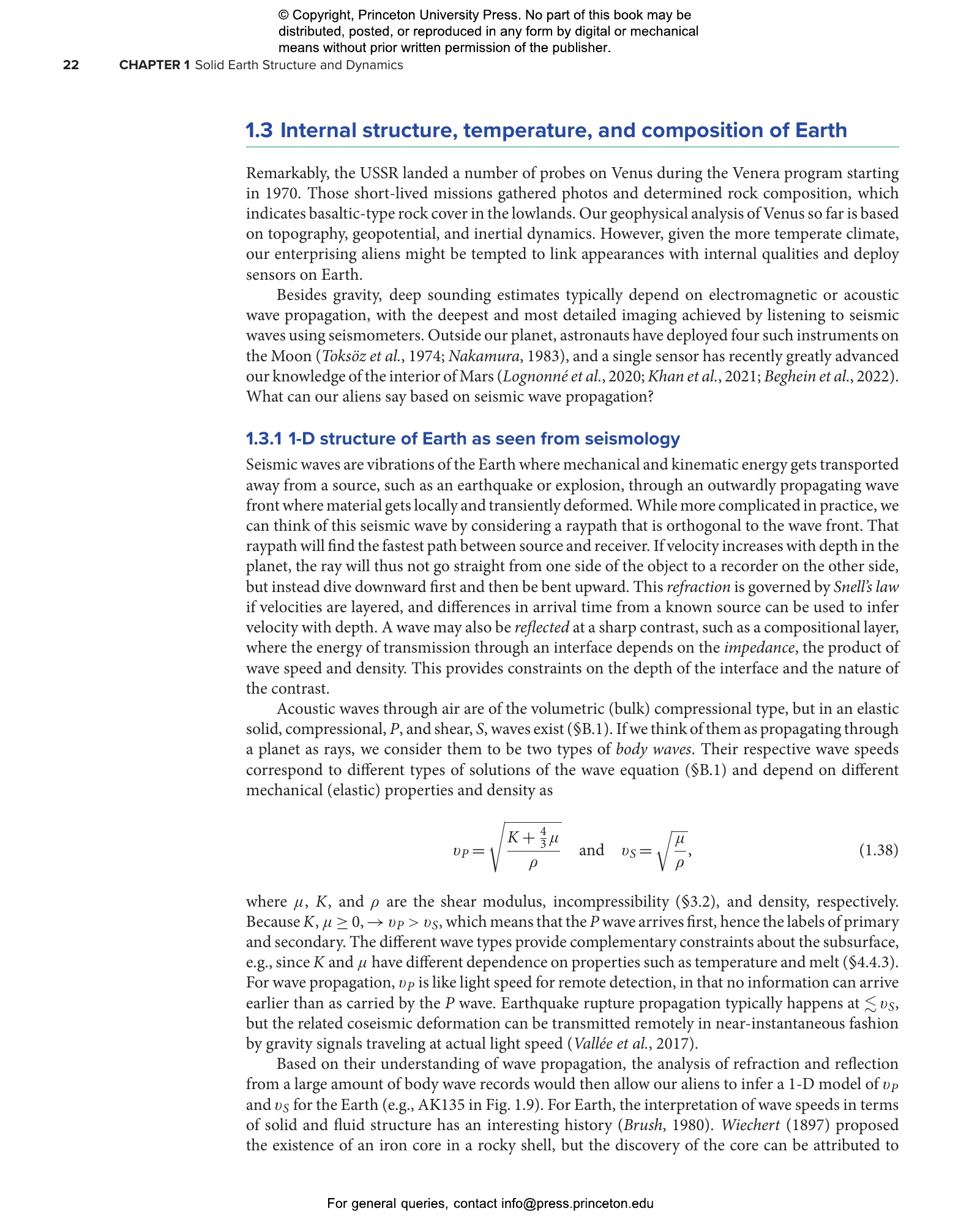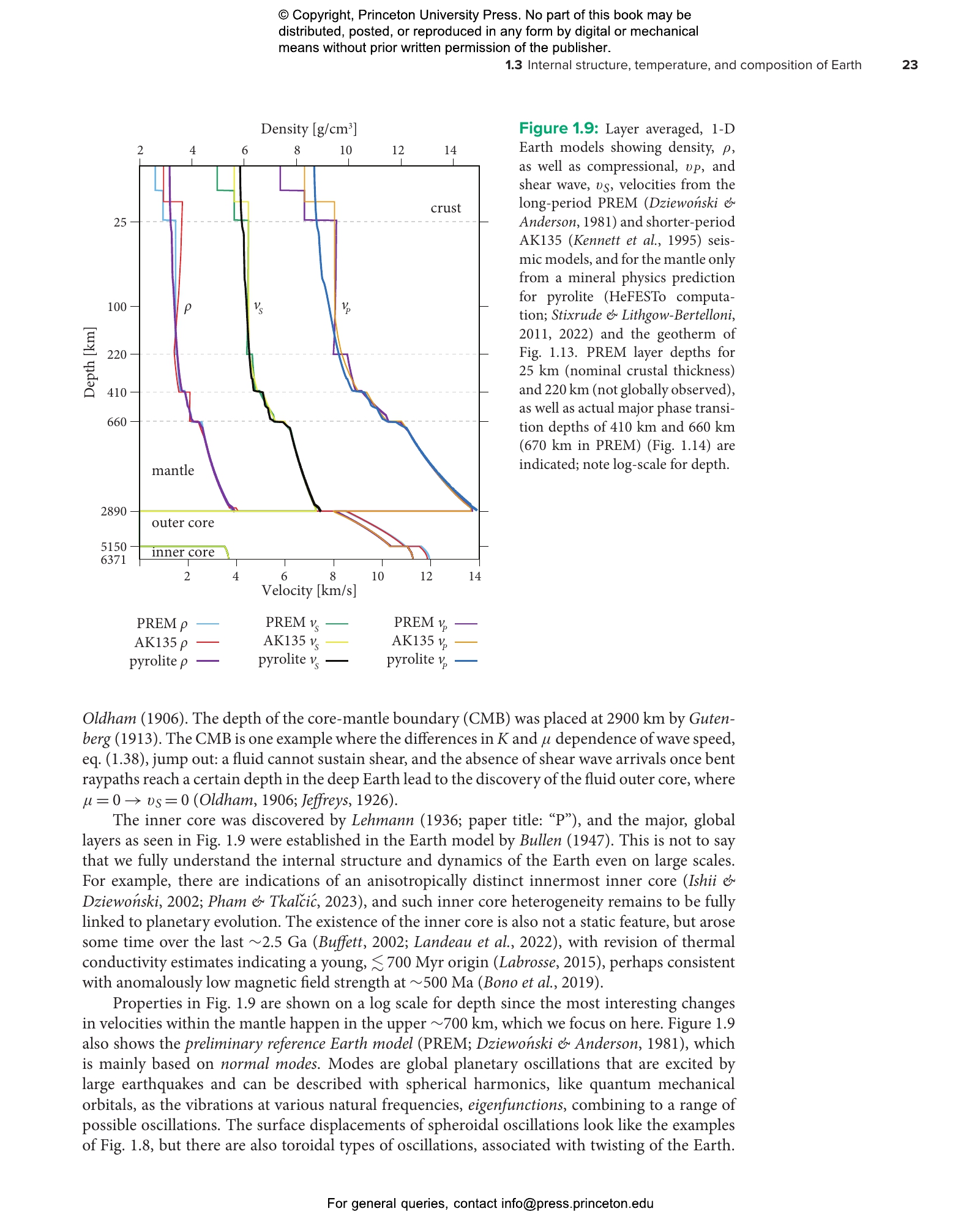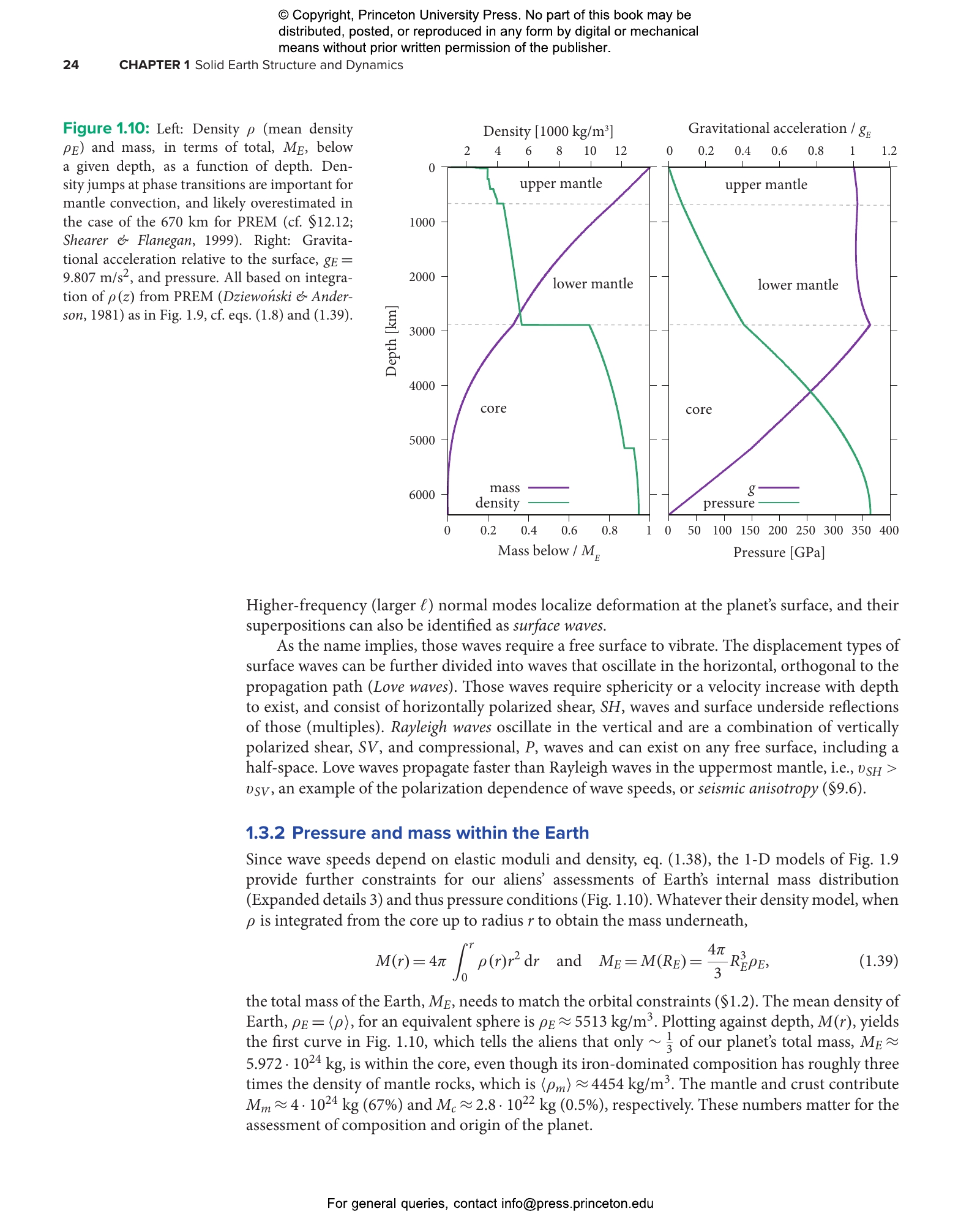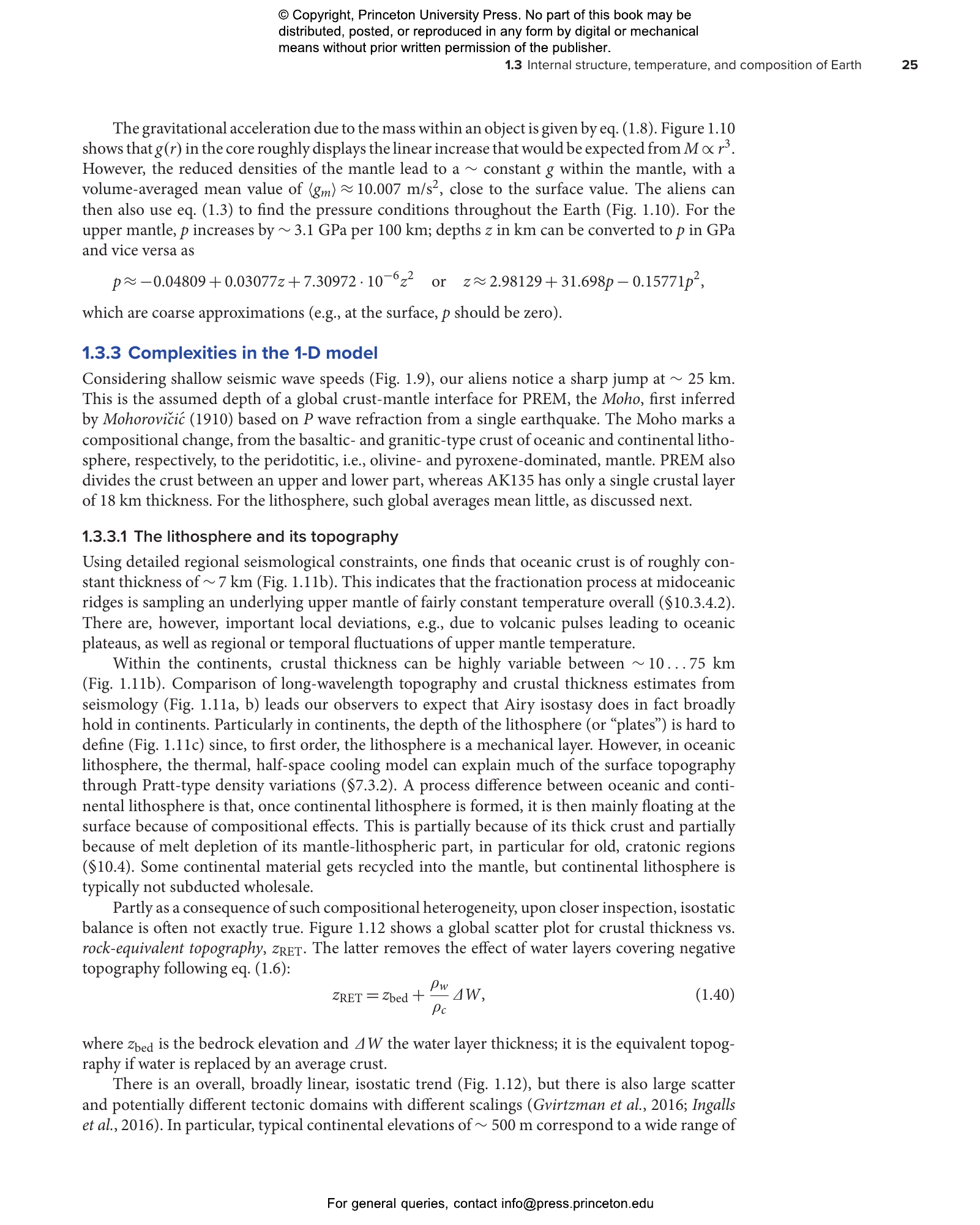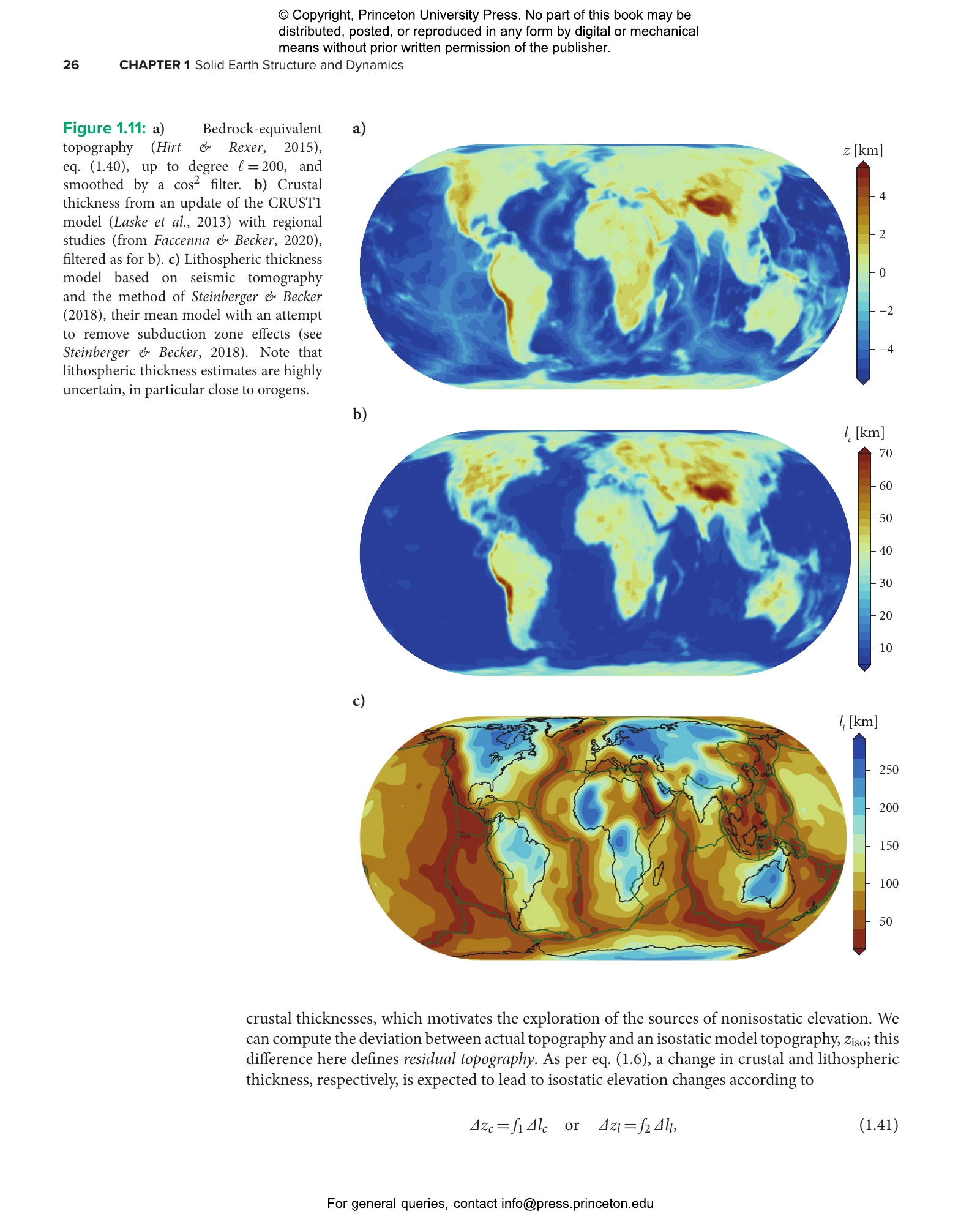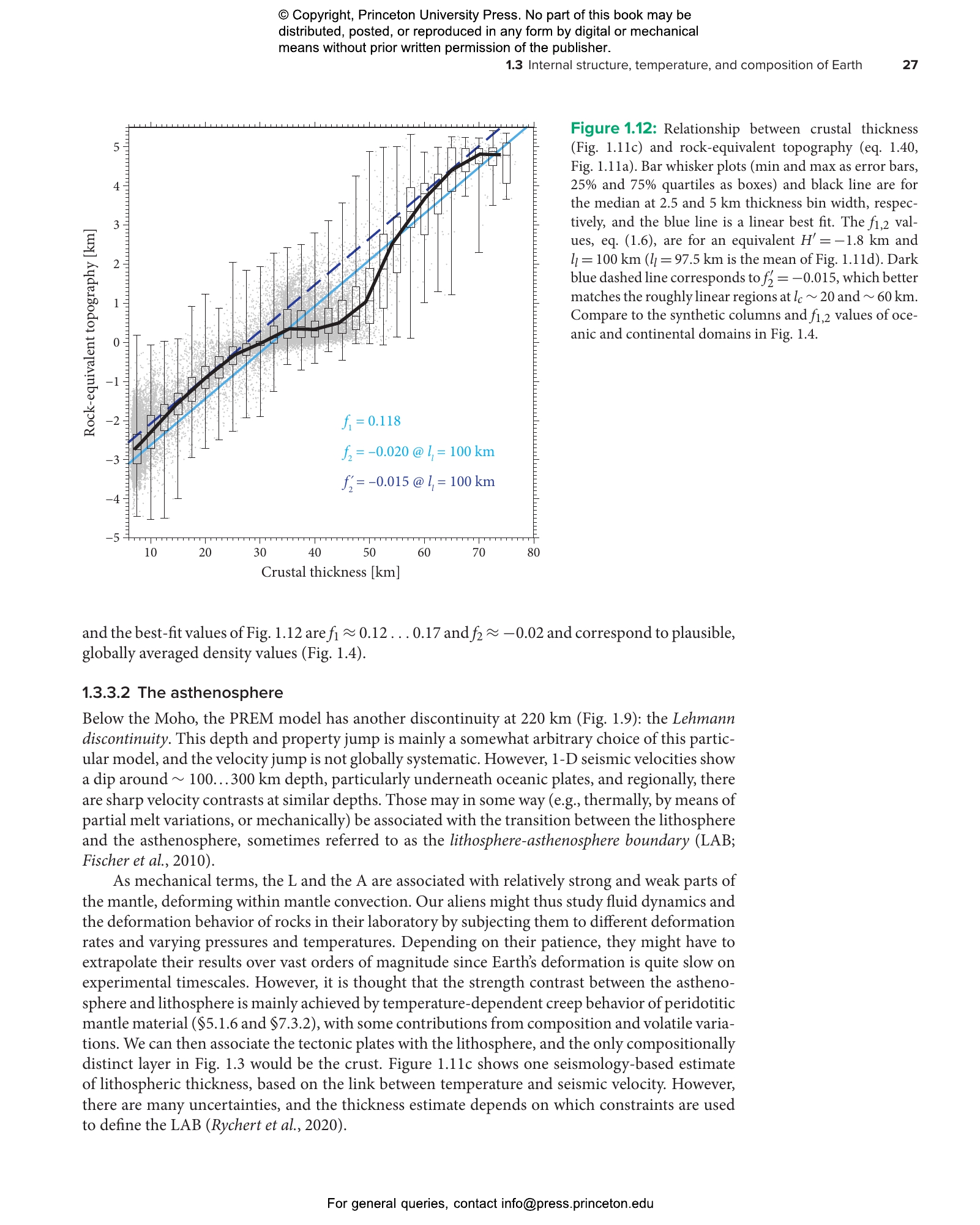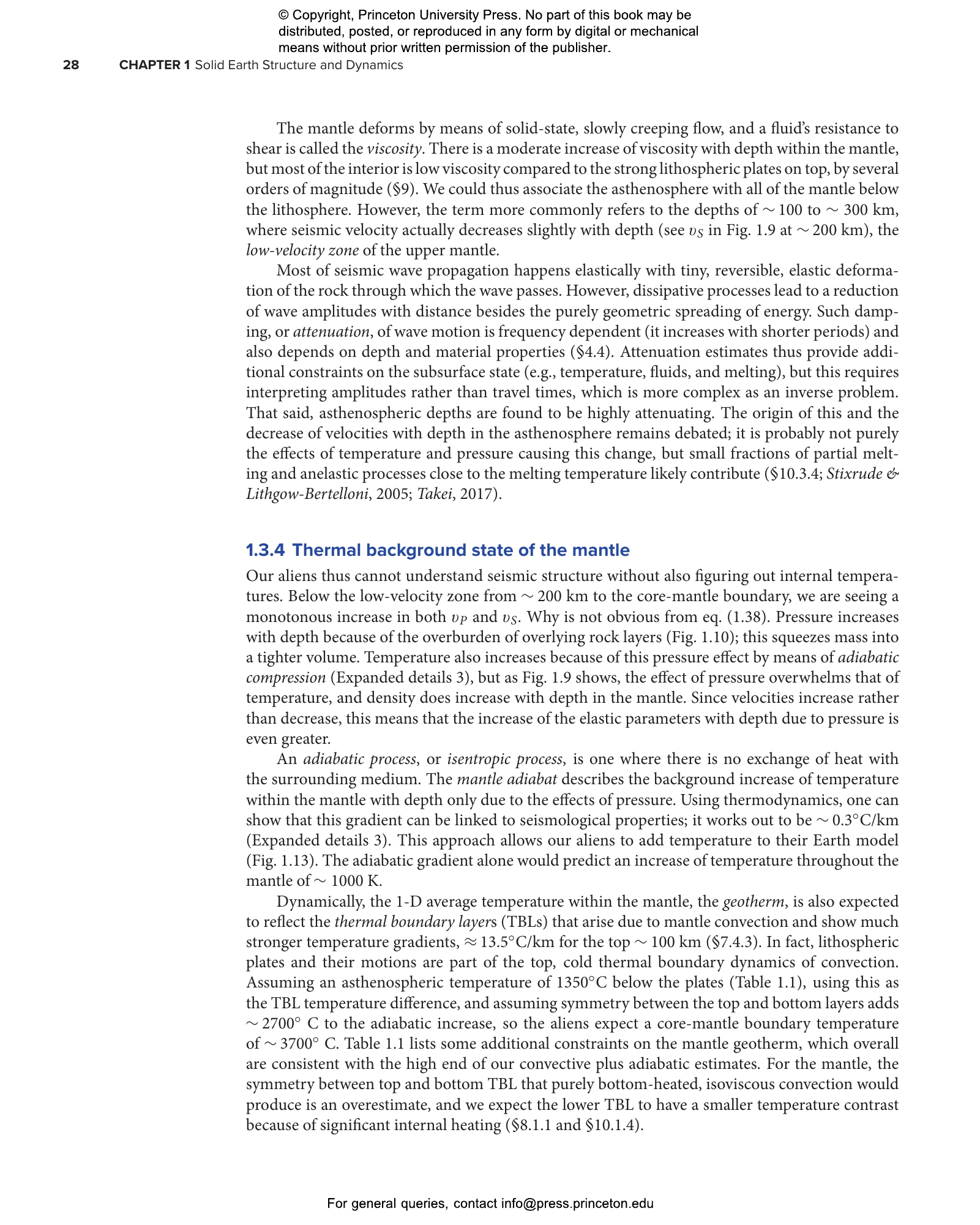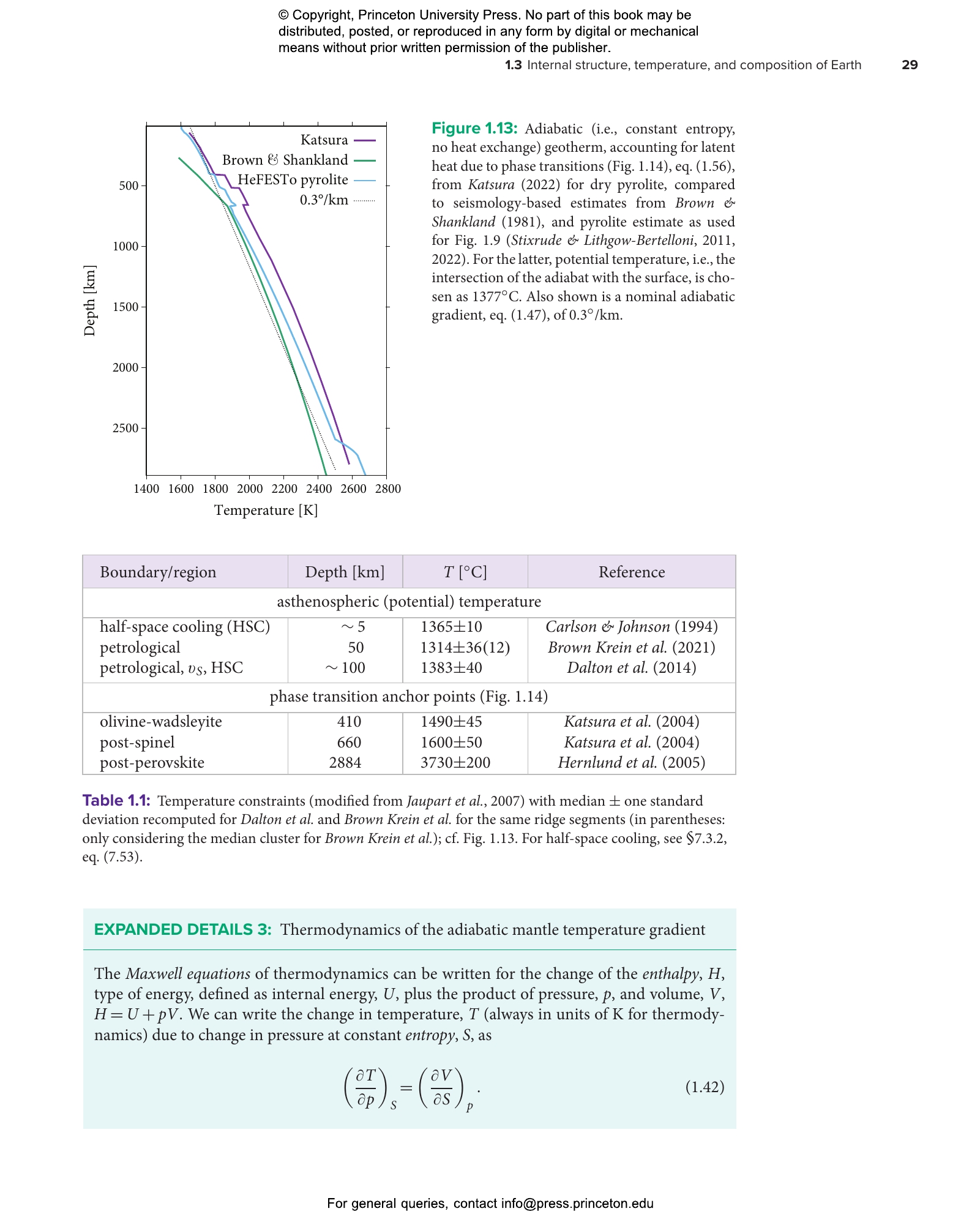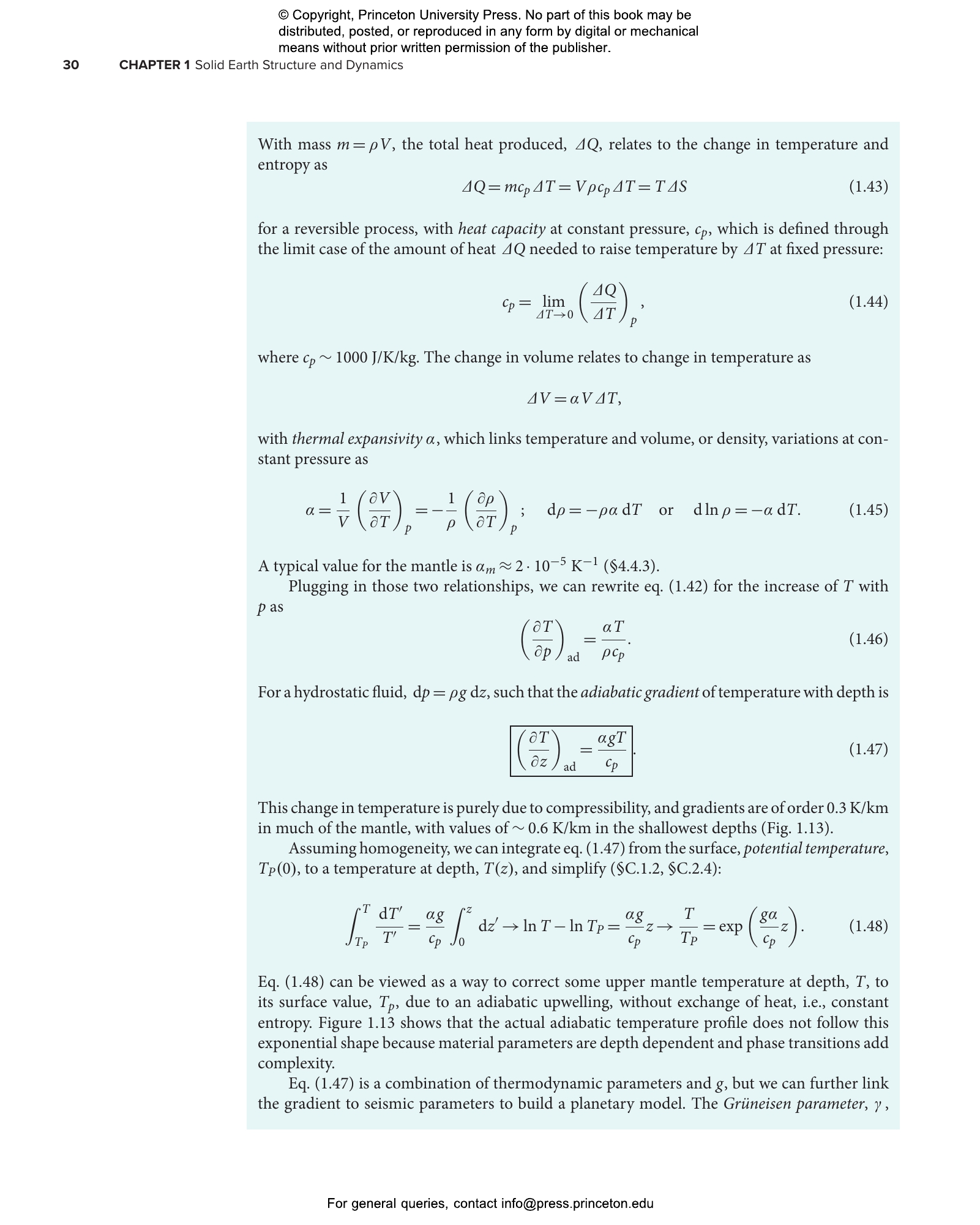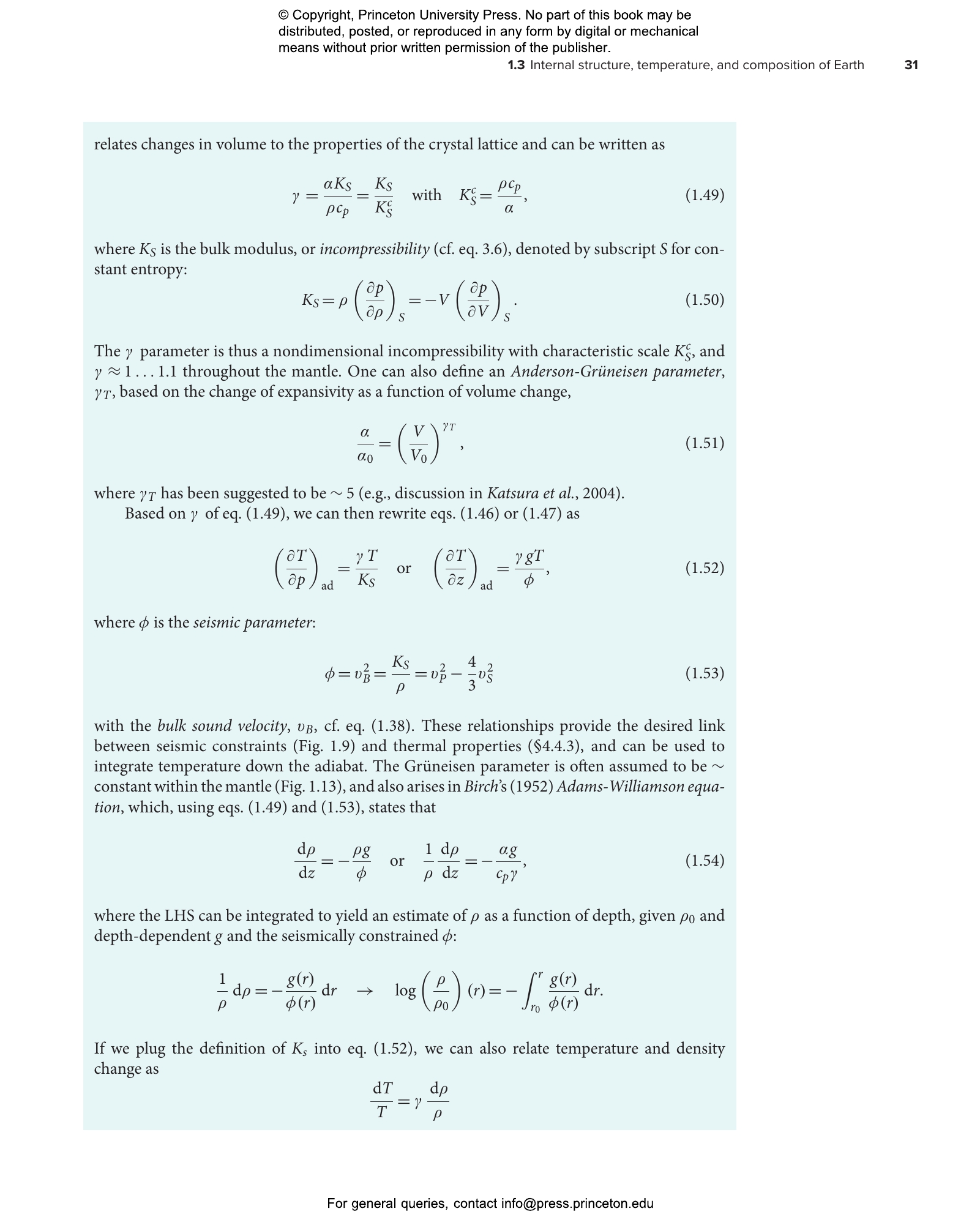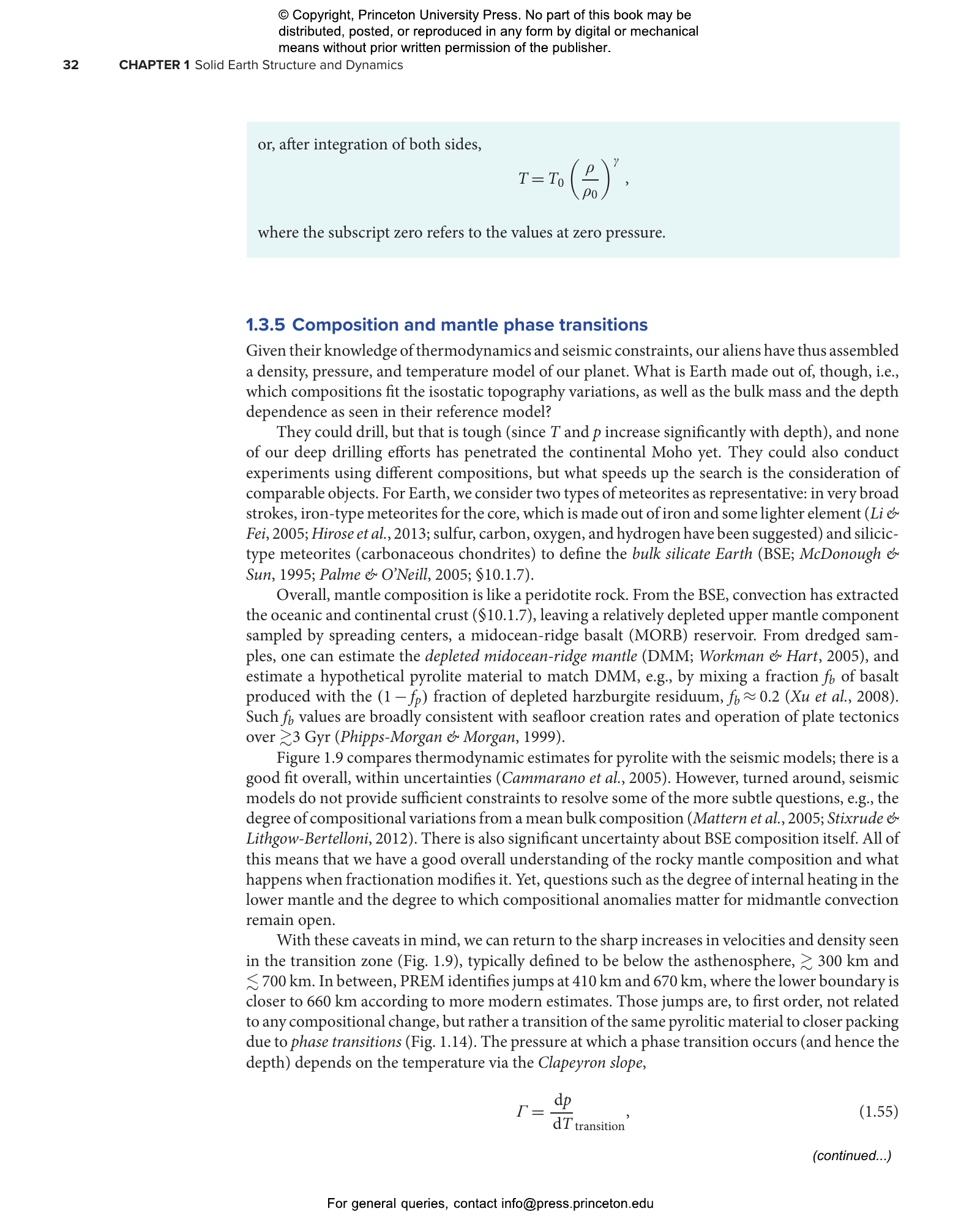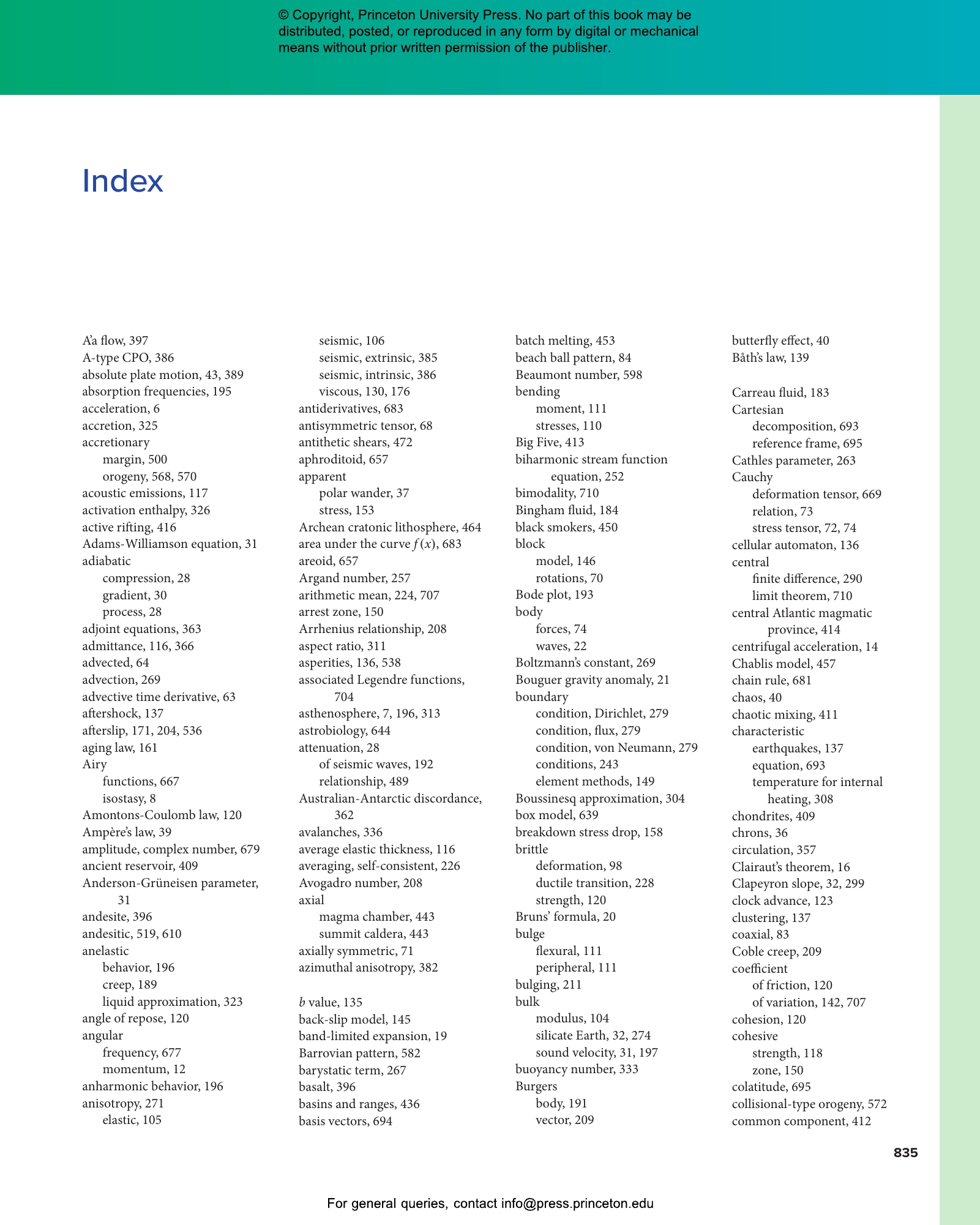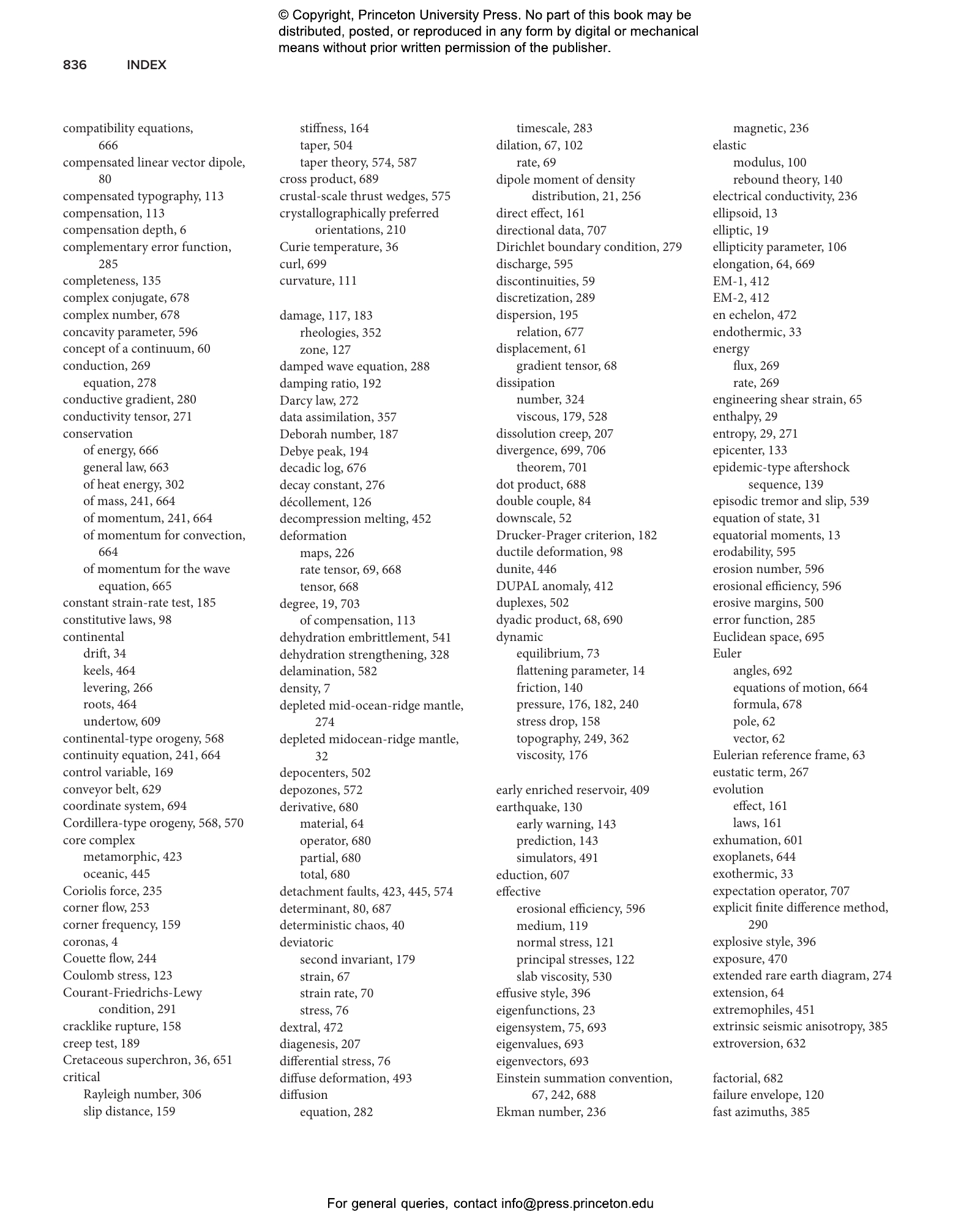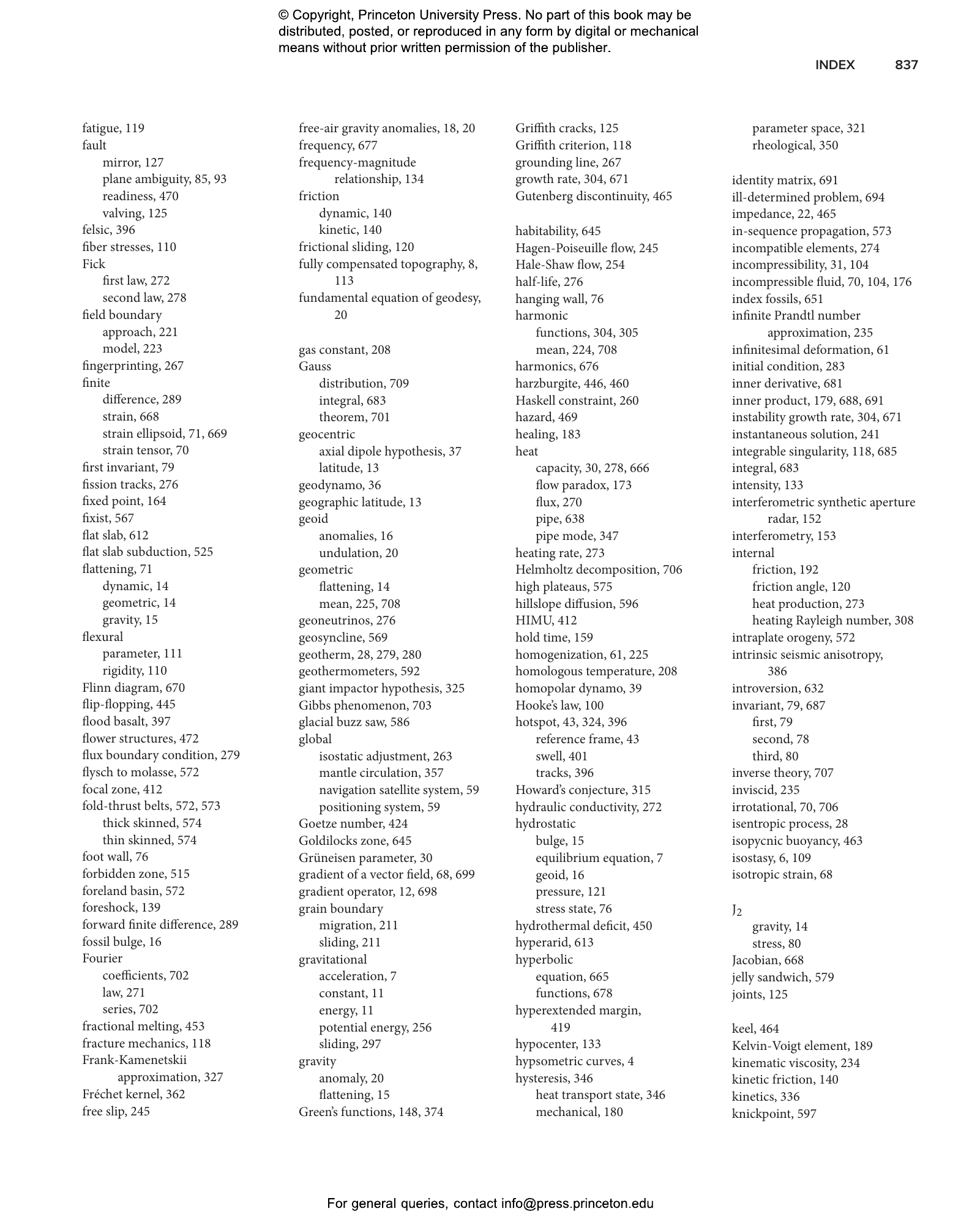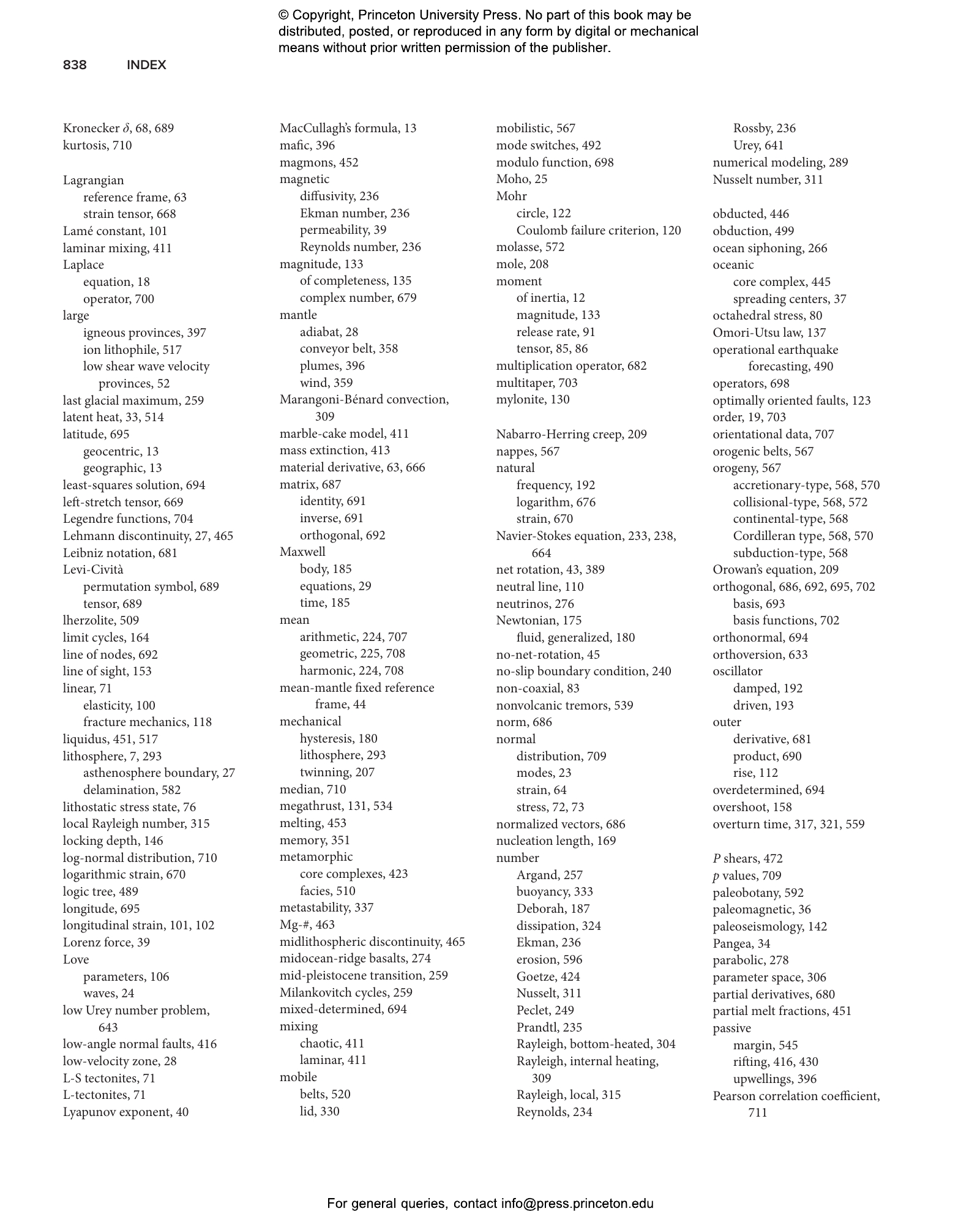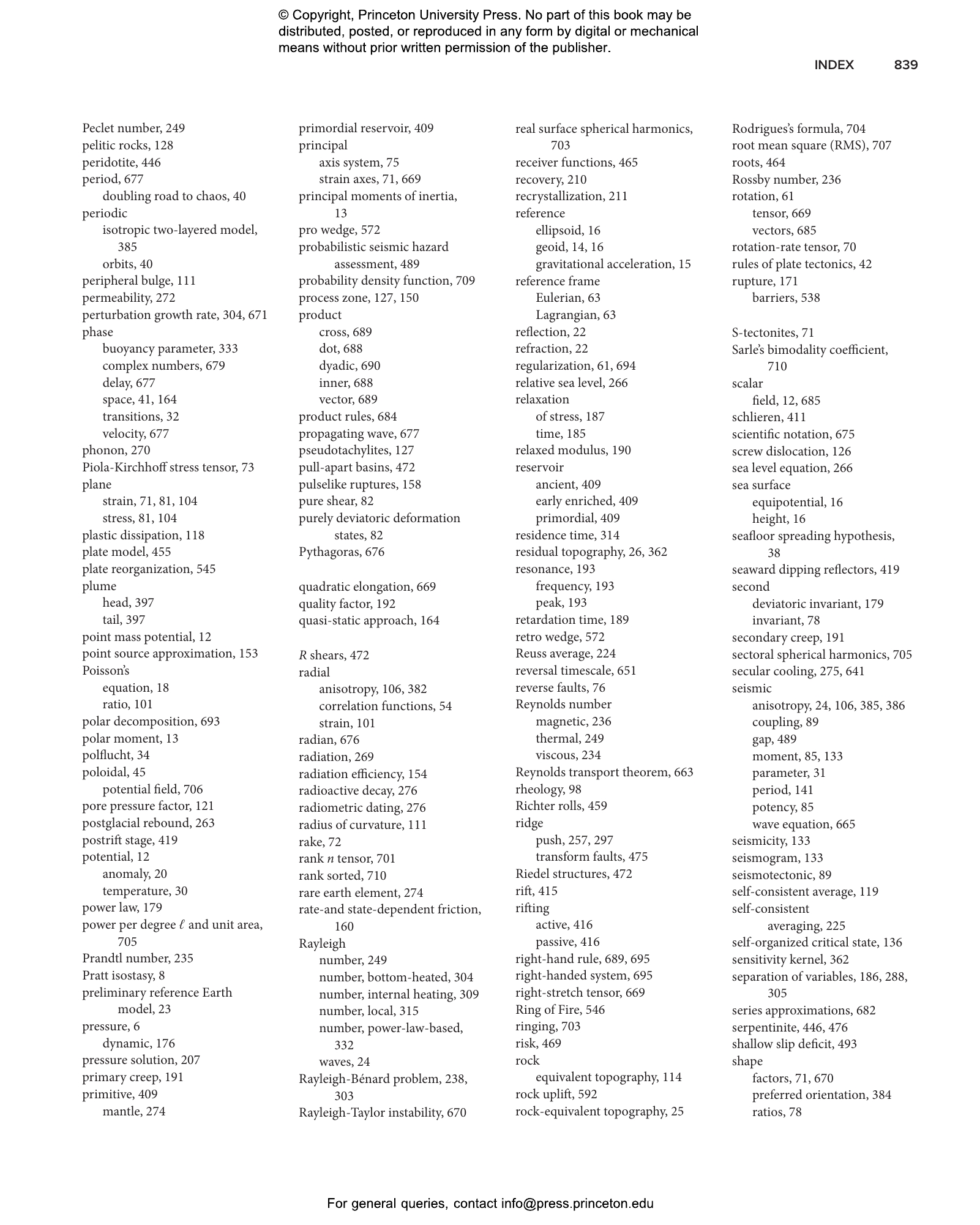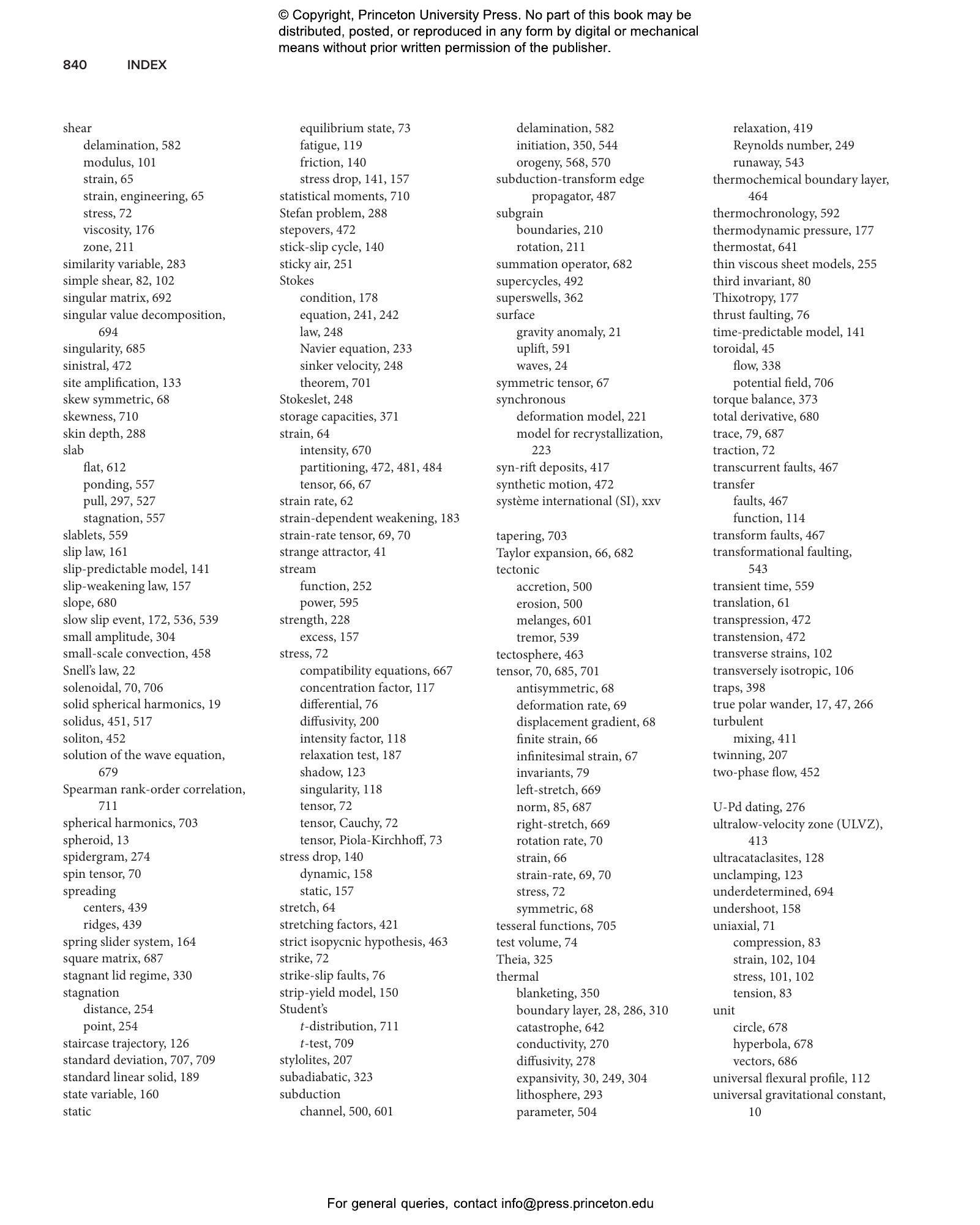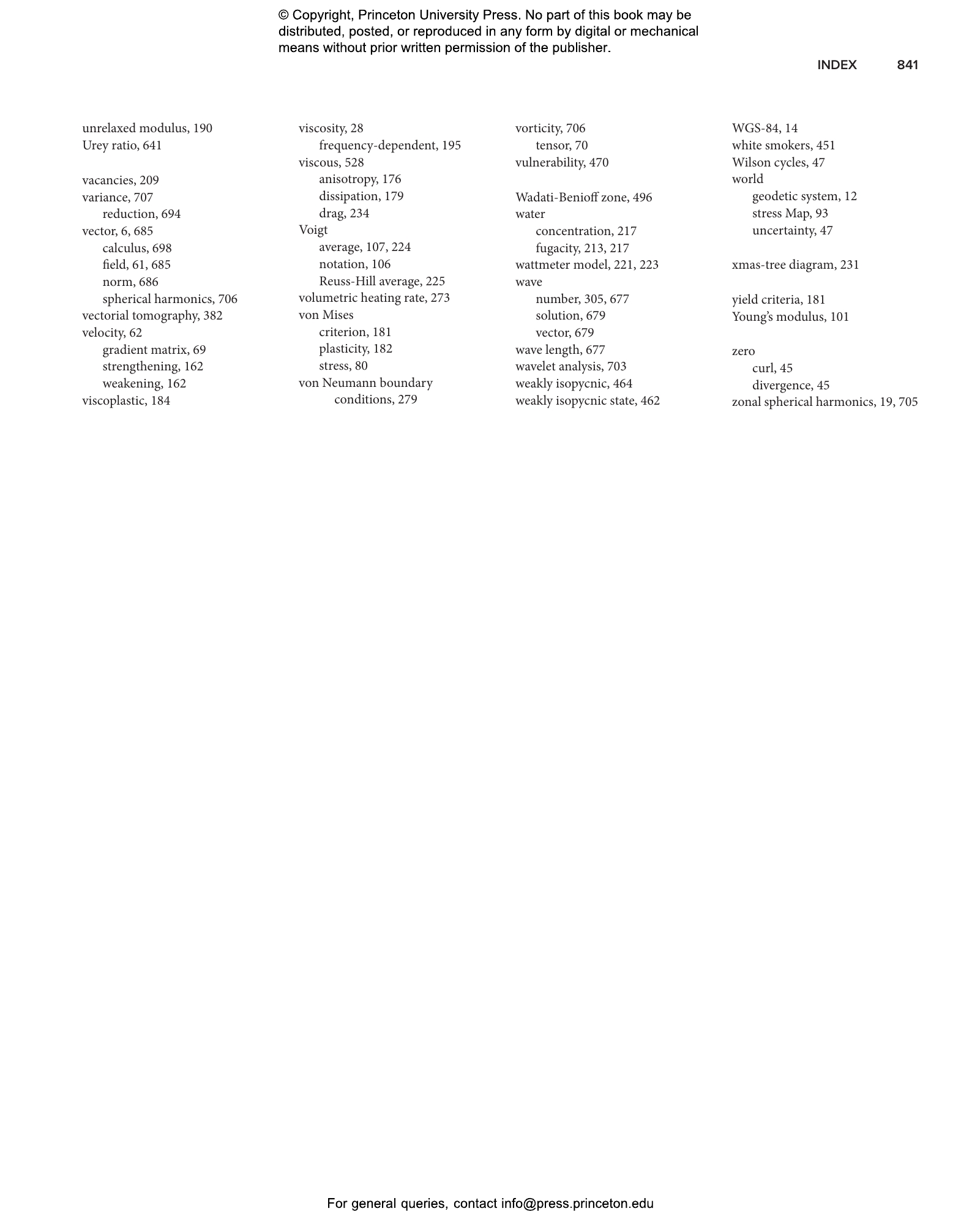Tectonic Geodynamics
A comprehensive, integrative approach to tectonics and geodynamics for students and researchers


Hardcover
- Price:
- $125.00/£105.00
- ISBN:
- Published:
- Nov 11, 2025
- Copyright:
- 2025
- Pages:
- 872
- Size:
- 8 x 10 in.
- Illus:
- 451 color illus. 11 tables.
ebook (EPUB via app)
- Price:
- $125.00/£105.00
- ISBN:
- Published:
- Nov 11, 2025
- Copyright:
- 2025
- Pages:
- 872
- Size:
- 8 x 10 in.
- Illus:
- 451 color illus. 11 tables.
ebook (PDF via app)
- Price:
- $125.00/£105.00
- ISBN:
- Published:
- Nov 11, 2025
- Copyright:
- 2025
- Pages:
- 872
- Size:
- 8 x 10 in.
- Illus:
- 451 color illus. 11 tables.
Over the past half century, major achievements have been made in the study of Earthâs surface structure and kinematics and the internal dynamics of the lithosphere and mantle. Many of these advances have relied on the integration of data and models from plate tectonics and geodynamics, yet traditional divisions persist in how these two disciplines are taught and practiced. This textbook bridges the gap, connecting geophysical and geological approaches to understand the physical processes that shape our planetâs evolution, from mantle convection to orogeny and earthquakes. An innovative approach to the solid Earth system, Tectonic Geodynamics provides a basis to explore the fundamental connections between the planetâs deep interior dynamics and the surface.
- The first textbook to integrate tectonics, structural geology, geodynamics, geodesy, and seismology in a single volume
- Offers a physics-focused guide for understanding how the solid Earth system operates
- Uses a âno prerequisitesâ approach supported by an extensive appendix that includes a calculus and linear algebra primer and coverage of key topics such as coordinate systems and spectral analysis
- Includes a wealth of exercises and end-of-chapter review questions
- An ideal textbook for advanced undergraduates and graduate students in geology, geophysics, and related fields such as physics and engineering
- Invaluable for self-study and as a self-contained resource for researchers
- Supporting materials provided for instructors, including an instruction guide, full-color illustration package, and sample syllabi
Thorsten Becker holds the Shell Foundation Distinguished Chair in Geophysics in the Jackson School of Geosciences at the University of Texas at Austin, where he is also a faculty associate of the Oden Institute for Computational Engineering and Sciences. Claudio Faccenna is head of the Lithosphere Dynamics Section at GFZ Helmholtz Centre Potsdam and a professor in the Department of Science at Roma Tre University.
- Introduction
- I Introduction to the Solid Earth System
- 1 AN EXPLORATION OF BASIC SOLID EARTH STRUCTURE AND DYNAMICS
- 1.1 Topography
- 1.1.1 Isostasy
- 1.2 Geopotentials: Shape, spin, and geoid
- 1.2.1 Gravitational potential
- Expanded details 1: Moments of inertia and geopotentials of an ellipsoidal Earth
- 1.2.2 Reference geoid, spin, and the Earth-Moon system
- 1.2.3 Geoid and gravity anomalies
- Expanded details 2: Geoid, spherical harmonics, and gravity anomalies
- 1.3 Internal structure, temperature, and composition of Earth
- 1.3.1 1-D structure of Earth as seen from seismology
- 1.3.2 Pressure and mass within the Earth
- 1.3.3 Complexities in the 1-D model
- 1.3.3.1 The lithosphere and its topography
- 1.3.3.2 The asthenosphere
- 1.3.4 Thermal background state of the mantle
- Expanded details 3: Thermodynamics of the adiabatic mantle temperature gradient
- 1.3.5 Composition and mantle phase transitions
- 1.4 Plate motions in the past and at present
- 1.4.1 Seaï¬oor spreading and seaï¬oor age
- Expanded details 4: Rikitake dynamo, magnetic ï¬eld creation, and chaos
- 1.4.2 Current plate motions
- 1.4.2.1 Absolute reference frames and net rotation
- 1.4.2.2 Poloidal and toroidal ï¬ow
- 1.4.3 Plate motion reconstructions
- 1.5 Seismic tomographyâ3-D mantle structure
- Review questions and discussion topics 1
- 1.1 Topography
- II Fundamental Physics
- 2 CONTINUUM MECHANICS
- 2.1 Concept of a continuum
- 2.2 Displacements, velocities, and reference frames
- 2.2.1 Reference frames for considering continued deformation
- 2.2.1.1 Lagrangian reference frame
- 2.2.1.2 Eulerian reference frame
- 2.2.1 Reference frames for considering continued deformation
- 2.3 Strain
- 2.3.1 Displacement gradient tensor
- 2.3.2 Strain rates
- 2.3.3 Finite strain
- 2.4 Forces and stress
- 2.4.1 Sign convention for stress
- 2.4.2 Cauchy stress tensor
- 2.4.3 Static force equilibrium and stress tensor symmetry
- 2.4.4 Principal axes of the stress tensor
- 2.4.5 Pressure and deviatoric stress
- Expanded details 5: Tensor invariants and measures of stress
- 2.4.6 Stress in two dimensions
- 2.4.7 Pure shear and simple shear
- 2.4.8 Continuity of stress tensor components
- Exercise 1: Strain, strain rates, and stress
- 2.5 Constraining crustal deformation and stress
- 2.5.1 Moment tensors and the gCMT catalog
- Expanded details 6: Non-double-couple moment tensor deformation
- 2.5.2 Seismic coupling and seismotectonics
- 2.5.3 Crustal strain-rate ï¬elds from geodesy
- 2.5.4 Constraints on stress within the lithosphere
- 2.5.5 Stress vs. strain from focal mechanisms
- Review questions and discussion topics 2
- 3 ELASTIC AND BRITTLE BEHAVIOR OF ROCKS
- 3.1 Constitutive laws
- 3.2 Elasticity
- 3.2.1 2-D elasticity, plane strain/stress
- Expanded details 7: Isotropic and anisotropic elasticity
- Exercise 2: Stresses in the lithosphere
- 3.2.2 Elastic ï¬exure
- 3.2.2.1 Flexural proï¬les
- 3.2.2.2 Flexural vs. isostatic compensation
- 3.2.2.3 Gravity-topography ratios
- 3.3 Brittle failure
- 3.3.1 Fracturing and faulting
- 3.3.1.1 Griï¬th criterion and linear elastic fracture mechanics
- 3.3.2 Mohr-Coulomb failure and friction
- 3.3.2.1 Byerleeâs rule (or âlawâ)
- 3.3.2.2 Mohrâs circle
- Exercise 3: Byerleeâs law applied to the lithosphere
- 3.3.2.3 Griï¬th cracks and ï¬uid eï¬ects
- 3.3.2.4 Shear cracks
- 3.3.3 Fault zone structure
- 3.3.1 Fracturing and faulting
- 3.4 Earthquakes and friction
- 3.4.1 Earthquake statistics
- 3.4.1.1 Frequency-magnitude (Gutenberg-Richter) relationship
- 3.4.1.2 Clustering: Omoriâs and BÃ¥thâs laws
- 3.4.1.3 Some implications of clustered seismicity
- 3.4.2 Static and dynamic friction and the seismic cycle
- 3.4.2.1 Elastic rebound and stick-slip cycles
- 3.4.2.2 How regular are large earthquakes?
- 3.4.2.3 Earthquake predictability
- 3.4.3 Modeling and constraining coseismic deformation
- 3.4.3.1 Screw dislocation in an elastic half space
- 3.4.3.2 Postseismic relaxation in a conï¬ned depth region
- 3.4.3.3 Fault solution for two elastic layers
- 3.4.3.4 Dislocation models for ï¬nite faults
- 3.4.3.5 Tectonic space geodesy
- 3.4.4 Earthquake source mechanics
- 3.4.4.1 Constant stress drop scalings
- Expanded details 8: Rupture dynamics energy considerations and stress drop
- 3.4.5 Rate and state friction as a constitutive law
- Expanded details 9: Physical processes behind rate-state friction
- 3.4.5.1 Stability and limit cycles of an RSF spring slider
- Expanded details 10: Numerical implementation of rate-state friction equations
- 3.4.5.2 Frictional stability in the lab and in nature
- 3.4.5.3 Complex seismic cycles on simple faults
- 3.4.6 Fault strength, stress, and heterogeneity
- 3.4.1 Earthquake statistics
- Review questions and discussion topics 3
- 4 VISCOUS, PLASTIC, AND TRANSIENT BEHAVIOR
- 4.1 Newtonian ï¬uids
- 4.1.1 Bulk viscosity and partial melting
- 4.1.2 Viscous dissipation
- 4.2 Non-Newtonian ï¬uids
- 4.2.1 Work hardening and work softening
- 4.2.2 Plastic behavior
- 4.2.2.1 Von Mises yield criterion
- 4.2.2.2 Drucker-Prager criterion
- 4.2.3 Strain and strain-rate-dependent weakening
- 4.3 Combined material behavior and transient viscoelasticity
- 4.3.1 Bingham viscoplasticity
- 4.3.2 Two viscous dashpots in series
- 4.3.3 Viscoelastic behavior: The Maxwell body
- Expanded details 11: Derivation of the viscoelastic Maxwell body response
- Expanded details 12: Other viscoelastic transient models
- 4.4 Attenuation and frequency-dependent moduli
- 4.4.1 Attenuation for the standard linear solid
- 4.4.2 Q within the Earth
- 4.4.3 Temperature derivatives of seismic velocities
- 4.5 Transient deformation throughout the seismic cycle
- 4.5.1 Relaxation of an elastic plate over a viscous layer
- 4.5.2 Dislocation solution for a viscoelastic half-space
- 4.5.3 Earthquake cycle solution for a viscoelastic half-space
- 4.5.4 Postseismic response after earthquakes
- Review questions and discussion topics 4
- 4.1 Newtonian ï¬uids
- 5 LITHOSPHERIC STRENGTH FROM COMPLEX ROCK RHEOLOGY
- 5.1 Microphysical mechanisms for viscous creep
- 5.1.1 Pressure solution
- 5.1.2 Temperature dependence: The Arrhenius law
- 5.1.3 Diï¬usion creep
- 5.1.4 Dislocation creep
- 5.1.5 Mapping ductile crustal deformation
- 5.1.6 Laboratory-derived creep laws
- 5.1.7 Peierls creep/plasticity
- Expanded details 13: Fugacity and volatile concentration
- Exercise 4: Laboratory-derived creep laws
- 5.2 Piezometers and grain size evolution
- Expanded details 14: Grain size evolution laws
- 5.3 Averaging of heterogeneous media
- 5.3.1 Harmonic (weak) mean
- 5.3.2 Arithmetic (strong) mean
- 5.3.3 Geometric (intermediate) mean
- 5.3.4 Self-consistent averaging
- 5.4 Deformation maps
- 5.5 Strength of the lithosphere and upper mantle
- 5.5.1 Byerleeâs law as a function of pressure
- 5.5.2 Brittle-ductile behavior
- 5.5.2.1 Oceanic plates
- 5.5.2.2 Continental plates
- Review questions and discussion topics 5
- 5.1 Microphysical mechanisms for viscous creep
- 6 TRANSFER OF MOMENTUM: FLUID DYNAMICS
- 6.1 Nondimensional numbers and ï¬ow regimes
- Expanded details 15: Coriolis forces and geodynamo dynamics
- Exercise 5: Scaling analysis and nondimensional numbers
- 6.2 Steady, unidirectional ï¬ow and the 1-D Stokes equation
- Expanded details 16: Stokes (force balance) equation in 3-D
- 6.3 Shear and pressure-driven ï¬ow: Couette and Poiseuille solutions
- 6.3.1 Couette ï¬ow
- 6.3.2 Hagen-Poiseuille ï¬ow
- 6.3.3 Gravity-driven ï¬ow down a plane
- 6.4 Density-driven ï¬ow: The Stokes sinker
- 6.4.1 Stokes velocity
- 6.4.2 Rayleigh number from Stokes velocity and Peclet number
- 6.4.3 Dynamic topography of the Stokes sinker
- Expanded details 17: Role of viscosity variations for dynamic topography
- 6.5 Stream function solutions
- 6.5.1 Corner ï¬ow
- 6.5.2 Parabolic ï¬ow: Source in a uniform stream
- 6.5.3 Hale-Shaw ï¬ow and superposition
- 6.6 Thin viscous sheets and gravitational potential energy
- 6.7 Postglacial rebound and glacial isostatic adjustment
- 6.7.1 The Haskell constraint on mantle viscosity
- 6.7.1.1 Wavelength dependence of viscoelastic relaxation
- 6.7.1 The Haskell constraint on mantle viscosity
- Expanded details 18: Glacial isostatic adjustment and sea level
- Review questions and discussion topics 6
- 6.1 Nondimensional numbers and ï¬ow regimes
- 7 TRANSFER OF ENERGY: HEAT TRANSPORT
- 7.1 Conduction of heat and budgets
- 7.1.1 Heat budgets and fractionation
- 7.1.1.1 Fractionation and rare earth elements
- 7.1.1.2 Total radiogenic budget of the mantle
- 7.1.1.3 Radioactive decay and time dependence of internal heating
- 7.1.1 Heat budgets and fractionation
- 7.2 Diï¬usion of heat and the conduction equation
- 7.2.1 Steady-state conduction solutions: geotherms
- 7.2.1.1 Fixed surface temperature and heat ï¬ux
- 7.2.1.2 Fixed surface and base temperatures
- 7.2.1.3 Fixed surface temperature, constant ï¬ux at base
- 7.2.1.4 Fixed surface temperature, ï¬xed deep ï¬ux
- 7.2.1 Steady-state conduction solutions: geotherms
- 7.3 Time dependent solutions of the conduction equation
- 7.3.1 Half-space cooling (HSC)
- Expanded details 19: Half-space cooling solution by separation of variables
- Expanded details 20: Periodic heating of a semi-inï¬nite half-space
- Exercise 6: Finite diï¬erence solution of 1-D heat equation
- 7.3.2 Application of half-space cooling to the oceanic lithosphere
- 7.3.2.1 Oceanic plate bathymetry from HSC
- Exercise 7: Plate driving forces from half-space cooling
- 7.4 Convection
- 7.4.1 Instability analysis for the Rayleigh-Bénard problem
- Expanded details 21: Linear instability analysis for Rayleigh-Bénard convection
- 7.4.1.1 Internal heating
- 7.4.2 Earthâs mantle is convecting vigorously
- 7.4.3 Finite amplitude boundary layer model
- Expanded details 22: Modiï¬ed boundary layer models
- 7.4.3.1 Scaling laws for mantle convection
- 7.4.3.2 Layer thickness independence of heat ï¬ux in convection
- Expanded details 23: Boundary layer instability and local Rayleigh number
- 7.4.4 Nondimensional equations and the Rayleigh number
- Review questions and discussion topics 7
- 7.1 Conduction of heat and budgets
- 8 MANTLE CONVECTION
- 8.1 Numerical Rayleigh-Bénard convection experiments
- 8.1.1 Role of internal heating
- Expanded details 24: Compressibility and viscous heating
- 8.1.1.1 Top down or bottom up?
- 8.1.2 Earthâs thermal initial condition
- 8.1.2.1 Moon-forming impact
- 8.2 Temperature and stress dependence of viscosity
- 8.2.1 Approximations of rheological descriptions
- 8.2.1.1 Partial melt parameterization
- 8.2.2 Temperature dependence and the stagnant lid
- 8.2.3 Non-Newtonian ï¬ow
- Expanded details 25: Power-law based Rayleigh numbers
- 8.2.1 Approximations of rheological descriptions
- 8.3 Eï¬ect of phase transitions
- 8.3.1 Kinetics, metastability, and multiminerality
- 8.4 Eï¬ects of 3-D spherical geometry and toroidal ï¬ow
- 8.4.1 Generation of toroidal ï¬ow
- Expanded details 26: Generation of toroidal ï¬ow
- 8.5 Plate-generating convection models
- 8.5.1 Viscoplasticity to break the stagnant lid
- 8.5.1.1 The low-yield stress problem
- 8.5.1.2 Hysteresis of heat transport state?
- 8.5.2 The role of the asthenosphere
- 8.5.3 Eï¬ects of continents and the supercontinental cycle
- 8.5.4 Localization and memory: Rheological hysteresis
- 8.5.1 Viscoplasticity to break the stagnant lid
- Review questions and discussion topics 8
- 8.1 Numerical Rayleigh-Bénard convection experiments
- III Tectonics and Mantle Dynamics
- 9 GLOBAL MANTLE CIRCULATION
- 9.1 The mantle wind: Predicting mantle ï¬ow
- 9.2 Surface topography
- 9.2.1 Residual and dynamic topography
- 9.2.2 Estimates of dynamic topography
- 9.2.2.1 Fréchet kernels
- 9.2.3 Residual vs. dynamic surface topography
- 9.3 Time reversal of mantle convection
- 9.4 The geoid constraint on viscosity
- 9.4.1 Venus, volatile storage capacity, and geoid-topography ratios
- 9.4.2 Typical viscosity proï¬les and non uniqueness
- 9.5 Plate driving and crustal deformation studies
- 9.5.1 Plate driving forces
- 9.5.2 Crustal stress and lithospheric deformation
- Exercise 8: Modeling global mantle circulation with Seatree
- 9.5.3 Opportunities for model reï¬nement
- 9.6 Seismic anisotropy as a constraint for mantle ï¬ow
- 9.6.1 Origin of upper mantle seismic anisotropy
- 9.6.2 Development of CPO anisotropy in upper mantle ï¬ow
- 9.6.2.1 Mechanical anisotropy
- 9.6.2.2 Absolute plate motion and net rotations
- 9.6.2.3 Memory of deformation
- Review questions and discussion topics 9
- 10 DIVERGENT MOTIONS AND CREATION OF THE LITHOSPHERE
- 10.1 The role of plumes in mantle convection
- 10.1.1 Hotspots and plumes
- 10.1.2 Large igneous provinces
- 10.1.3 Plumes and the evolution of tectonics
- 10.1.4 Hotspot swells and plume heat transport
- 10.1.5 Hotspot reference frames and moving plumes
- 10.1.6 Thermal anomaly underneath hotspots and imaging plumes
- 10.1.7 Hotspots as probes of deep mantle reservoirs
- 10.1.7.1 Mixing of chemical heterogeneity in convection
- 10.1.7.2 Origin and geometry of geochemical reservoirs
- 10.1.8 Flood basalts and mass extinctions
- 10.2 Rifting: Breaking continents apart
- 10.2.1 Anatomy of a rift zone
- 10.2.2 Style and mechanics of rifting
- 10.2.3 Dynamics of rifting
- 10.2.4 The East African rift (EAR)
- 10.2.5 The Basin and Range
- 10.3 Oceanic spreading: Generating lithosphere
- 10.3.1 Structure of the oceanic crust
- 10.3.2 Slow to fast spreading and melt generation
- 10.3.3 Hydrothermal circulation
- 10.3.4 Partial melting
- 10.3.4.1 Two-phase ï¬ow
- 10.3.4.2 Melt parameterizations
- 10.3.5 Deviations from half-space cooling at old ages
- 10.3.5.1 Plate model
- 10.3.5.2 Chablis model
- 10.3.5.3 Physical processes for deviations from HSC
- 10.3.5.4 Regional deviations from HSC and reheating
- 10.4 Plates as thermochemical boundary layers
- 10.4.1 Compositional density anomalies in the oceanic lithosphere
- 10.4.2 The continental tectosphere
- 10.4.2.1 Continental keels
- 10.4.2.2 Midlithospheric discontinuities
- Review questions and discussion topics 10
- 10.1 The role of plumes in mantle convection
- 11 LATERAL MOTION OF THE LITHOSPHERE: STRIKE SLIP
- 11.1 Introduction
- 11.1.1 Hazard and risk
- 11.2 Anatomy of a strike-slip fault zone
- 11.3 Tectonic context of strike-slip systems
- 11.3.1 Oceanic transforms
- 11.3.1.1 Origin of oceanic transform faults
- 11.3.2 Continental transforms
- 11.3.2.1 Strike slip in collisional settings
- 11.3.2.2 Tibetan collision
- 11.3.2.3 Anatolian system
- 11.3.3 Strike-slip systems in an active subduction setting
- 11.3.1 Oceanic transforms
- 11.4 Continental transforms and earthquake dynamics
- 11.4.1 Strain localization underneath faults
- 11.4.2 Seismic hazard assessment and fault systems
- 11.4.2.1 Time-dependent hazard estimates
- 11.4.2.2 Constant fault geometry seismicity dynamics
- 11.4.2.3 Fault system evolution
- 11.4.3 Oï¬-fault deformation
- Review questions and discussion topics 11
- 11.1 Introduction
- 12 RECYCLING THE LITHOSPHERE: SUBDUCTION
- 12.1 Introduction
- 12.2 Anatomy of a subduction zone
- 12.3 Trench-forearc and sedimentary systems
- 12.4 Temperature, magmatism, and metamorphism
- 12.4.1 Thermal parameter and shear heating
- 12.4.2 Volatile ï¬uxes
- 12.4.3 Petrological constraints
- 12.5 Arc volcanism
- 12.5.1 Slab-associated, oï¬-arc volcanism
- 12.6 Back-arc systems
- 12.7 Slab and trench kinematics: Rollback
- 12.8 Flat slabs
- 12.9 Slab dynamics from force balance considerations
- 12.9.1 Viscous force balance
- 12.9.1.1 Eï¬ective strength of the subducting lithosphere
- 12.9.1 Viscous force balance
- 12.10 Subduction zone seismicity
- 12.10.1 The megathrust interface
- 12.10.1.1 Megathrust deformation cycles
- 12.10.1.2 The spectrum of fault slip
- 12.10.1.3 Megathrust evolution and tectonics
- 12.10.2 Bulk deep slab deformation from moment release rates and style
- 12.10.3 Deep earthquake mechanisms
- 12.10.1 The megathrust interface
- 12.11 Tectonics and dynamics of subduction evolution
- 12.11.1 Subduction initiation
- 12.11.2 Subduction systems of the Paciï¬c
- 12.11.2.1 The motion of the Paciï¬c and back-arc extension
- 12.11.2.2 Izu-Bonin Mariana and slab-slab interactions
- 12.11.2.3 Double slab systems
- 12.11.3 Slab rollback in the Mediterranean
- 12.12 Slab transport through the transition zone
- 12.12.1 Controls on regional slab and transition zone dynamics
- 12.12.2 Surface geology record of slab penetration
- Review questions and discussion topics 12
- 13 OROGENY: MAKING MOUNTAINS
- 13.1 Introduction
- 13.2 Anatomy of orogenic belts
- 13.3 The kinematics of mountain building
- 13.4 Mechanics of mountain building
- 13.5 The elevation of mountain belts
- 13.5.1 Wedge dynamics
- 13.5.1.1 Critical taper and Coulomb wedge theory
- Expanded details 27: Coulomb wedge equations
- 13.5.1 Wedge dynamics
- 13.6 Tectonics, climate, and erosion
- 13.6.1 What is uplifting relative to what?
- 13.6.2 Uplift rates and surface transport
- Expanded details 28: Stream power and surface transport laws
- 13.6.3 Fingerprinting topography
- 13.7 Exhumation of deep-seated rock units
- 13.8 Dynamics of mountain building
- 13.9 Regional case histories
- 13.9.1 Cordilleran orogeny: The Andes
- 13.9.2 Accretionary orogeny: The Mediterranean
- 13.9.3 Collisional orogeny: Himalaya-Tibet
- 13.10 Orogeny, the Wilson cycle, and supercontinental assembly
- Review questions and discussion topics 13
- 14 PLATE TECTONICS AND PLANETARY EVOLUTION
- 14.1 Onset of plate tectonics
- 14.2 Diï¬erent modes of early Earth heat transport
- 14.3 Parameterized thermal and volatile evolution models
- 14.4 Plate tectonics on other planets
- 14.4.1 Should exoplanets have plate tectonics?
- OUTLOOK
- IV Appendixes
- A REFERENCE DATA AND ADDITIONAL FIGURES
- A.1 Important constants and typical parameter values
- A.2 Geological timescale and magnetic reversals
- A.3 Phase diagrams
- A.4 Gravitational potentials for terrestrial planets
- A.4.1 Comparison to Venus and Mars: Aphroditoid and areoid
- A.5 Plate geometry, names, and motion statistics
- B ADDITIONAL TOPICS IN CONTINUUM MECHANICS
- B.1 General conservation laws: One law to derive them all
- B.2 Strain compatibility equations
- B.3 Finite strain
- B.4 Relationship between moment tensors and fault plane solutions
- B.5 Rayleigh-Taylor instabilities
- C MATH AND STATISTICS NOTES
- C.1 Useful conventions and basic mathematical functions
- C.1.1 Scientiï¬c notation, unit preï¬xes, and messing with exponents
- C.1.2 Logarithms
- C.1.3 Oscillations and trigonometric (or harmonic) functions
- C.1.3.1 Hyperbolic functions
- C.1.4 Complex numbers and trigonometric functions
- C.1.4.1 Quadratic equation
- C.2 Calculus concepts
- C.2.1 Full and partial derivatives
- C.2.2 Taking derivatives
- C.2.3 Series approximations
- C.2.4 Integrals
- C.2.5 Singularities
- C.1 Useful conventions and basic mathematical functions
- C.3 Linear algebra
- C.3.1 Vectors
- C.3.1.1 Norms
- C.3.2 Matrices
- C.3.2.1 Operations on matrices
- C.3.3 Adding and multiplying vectors and matrices
- C.3.3.1 Addition
- C.3.3.2 Dot vector product, δij, and ðijk
- C.3.3.3 Cross vector product
- C.3.3.4 Dyadic vector product
- C.3.3.5 Multiplication of a matrix with a scalar
- C.3.3.6 Multiplication of a matrix with a vector
- C.3.3.7 Multiplication of two matrices
- C.3.3.8 Inner product of two tensors
- C.3.4 Matrix ï¬avors and additional operations
- C.3.4.1 Identity matrix
- C.3.4.2 Matrix inverse
- C.3.4.3 Orthogonal or rotation matrices
- C.3.4.4 Euler angles and rotation matrices
- C.3.4.5 Matrix decomposition
- C.3.4.6 Eigenvalues and eigenvectors
- C.3.4.7 Linear inverse problems
- C.3.1 Vectors
- C.4 Coordinate systems and spherical trigonometry
- C.4.1 Cartesian and spherical coordinate systems
- C.4.2 Useful formulas for spherical trigonometry
- C.5 Vector calculus: Divergence, curl, and tensors
- C.5.1 The Gauss and Stokes theorems
- C.5.2 Tensors
- C.5.2.1 The wedge operator
- C.6 Spectral analysis
- C.6.1 Fourier series
- C.6.2 Spherical harmonics
- C.6.2.1 Helmholtz decomposition of vector ï¬elds
- C.7 Simple statistics and curve ï¬tting
- C.7.1 Means, variance, and standard deviation
- C.7.2 Distributions and moments
- C.7.3 Linear regression
- C.7.4 Correlation
- C.7.5 Estimates of uncertainties
- Bibliography
- Acronyms
- Index
âBecker and Faccenna offer an ambitious and comprehensive text that integrates an expansive summary of state-of-the-art geodynamical theory and modeling with a modern survey of geological and geophysical observations. This book will be of enormous value to students of geophysics and geology alike and could easily fuel multiple courses and years of study.ââDavid Bercovici, author of The Origins of Everything in 100 Pages (More or Less)
âThis book provides a much-needed integrative view of tectonics and geodynamics that is modern and highly interdisciplinary. Tectonic Geodynamics is at the heart of understanding Earthâs evolving structure, ranging from mantle convection and the movement of plates to the seismic hazards that impact society. While intended for the classroom, this is one of those books that most geoscientists will want on their shelf. The appendixes are a treasure!ââRoland Bürgmann, University of California, Berkeley
âMasterfully developing the fundamental concept that mantle geodynamics drives tectonics into an integrated worldview, this comprehensive text builds from first principles to explore in depth the ways in which dynamic processes in the mantle are manifested in tectonic processes across the planet.ââSean Willett, ETH Zurich
âBecker and Faccenna teach us the fundamentals of tectonics and mantle dynamics, intuitively employing continuum mechanics and linear algebra. Tectonic Geodynamics is modern and comprehensive in a way that few other books are, using examples from recent research advances and giving a good balance of both fundamentals and applications.ââClint Conrad, University of Oslo
âTectonic Geodynamics gives a very comprehensive and complete presentation of the state of the art of our knowledge of geodynamics and tectonics of Earth, including observations, experimental constrains, theory, and numerical models. No other textbook in the field has such a broad combination of approaches.ââTaras Gerya, author of Introduction to Numerical Geodynamic Modelling
